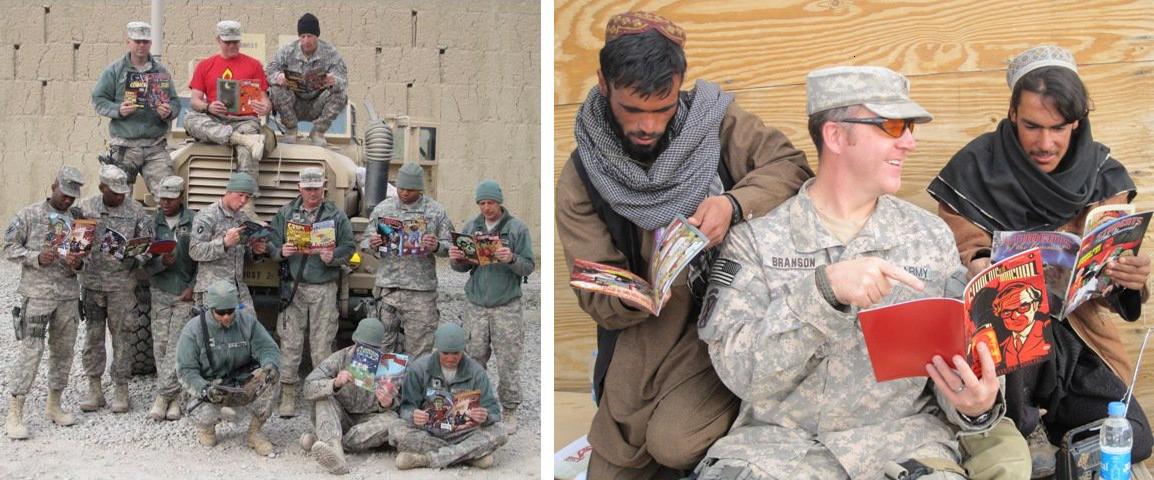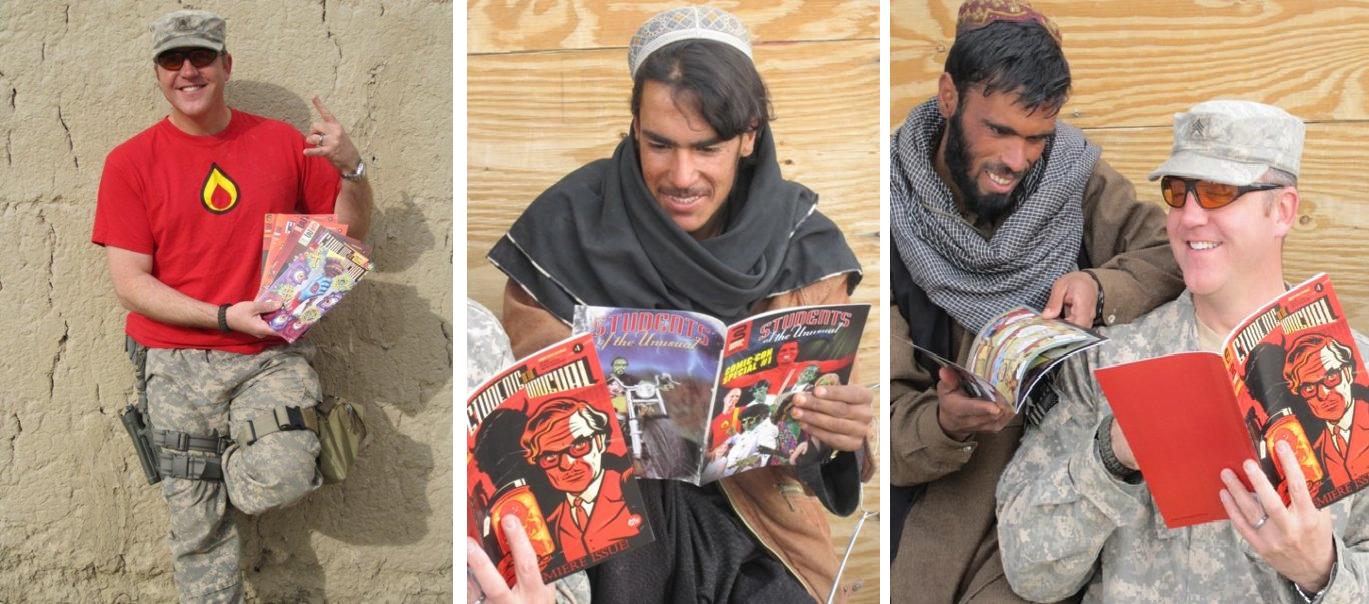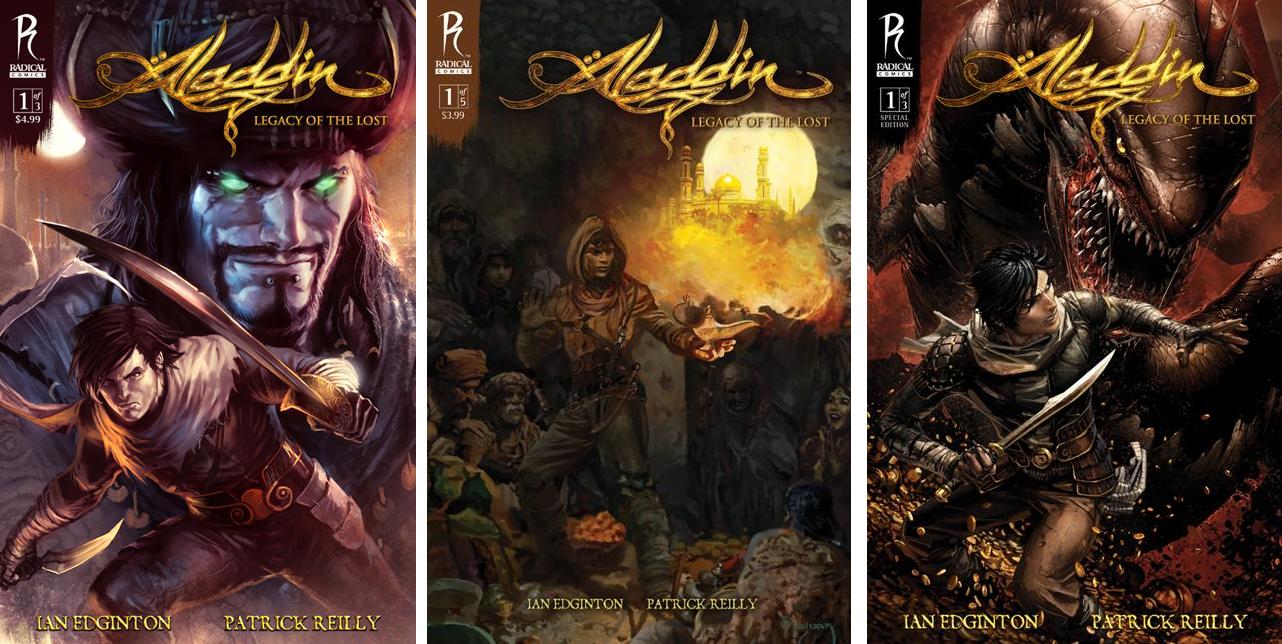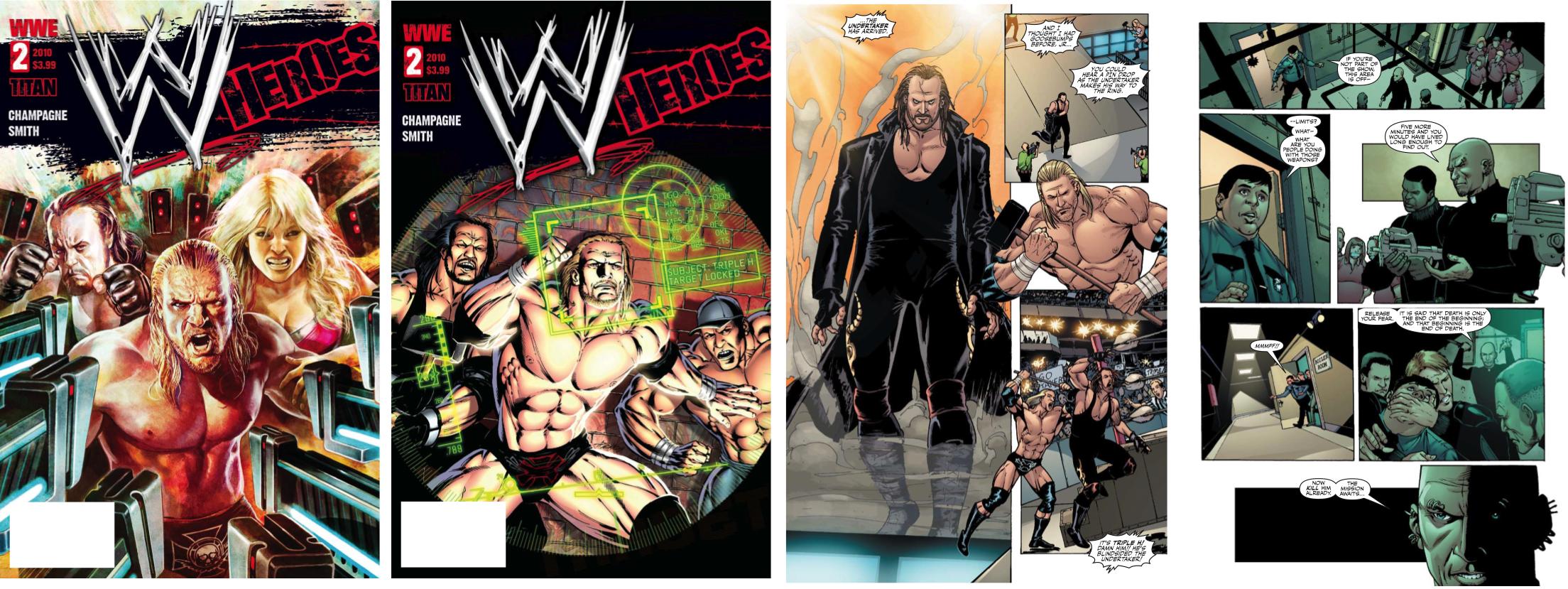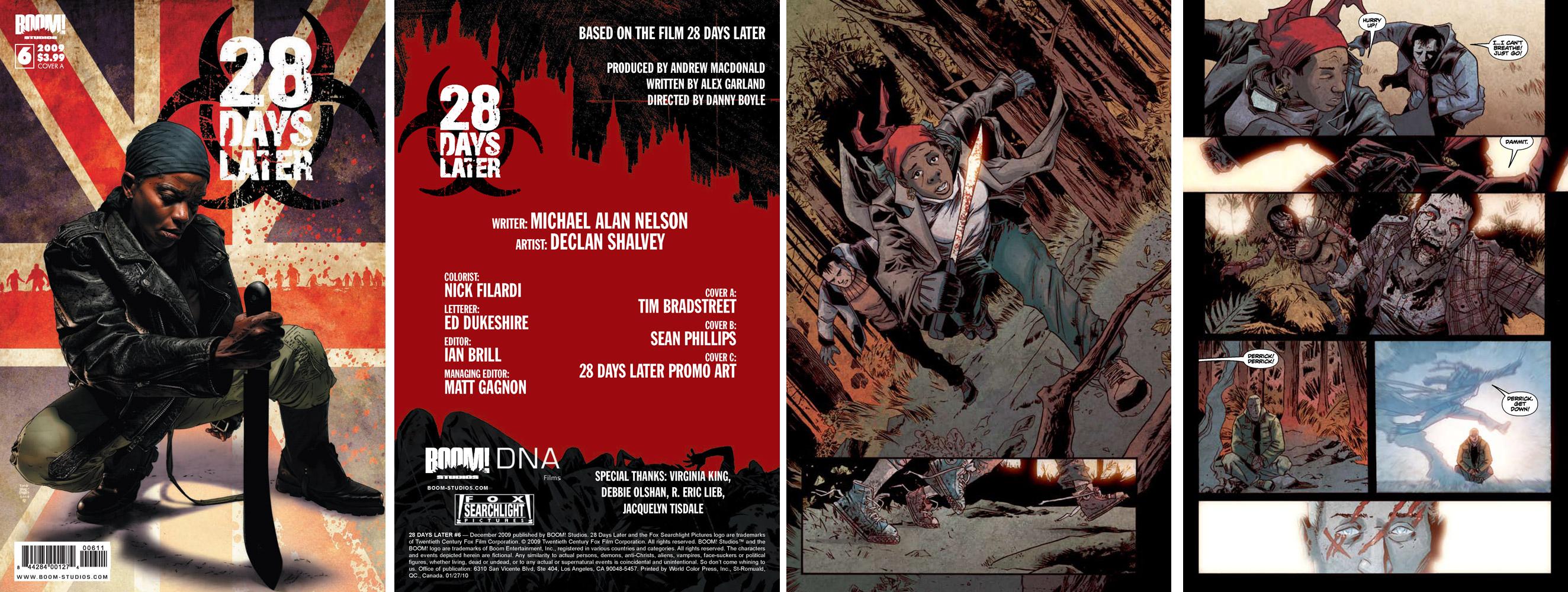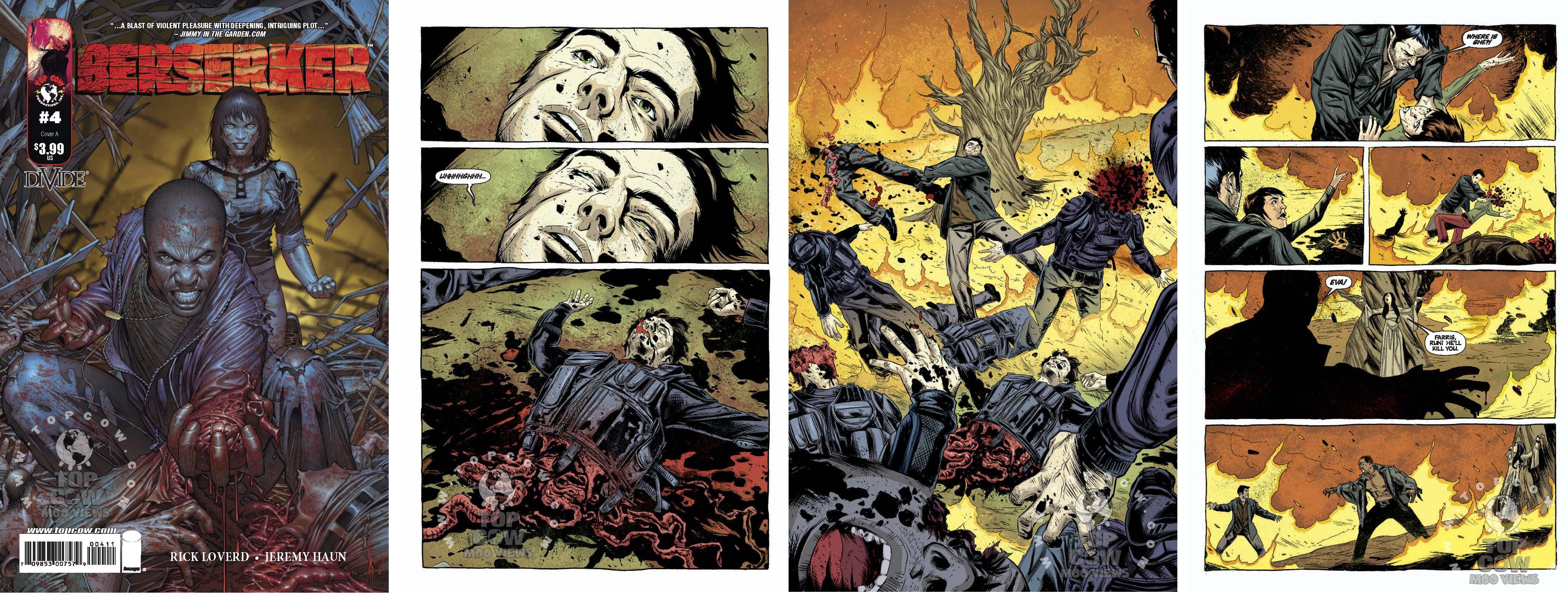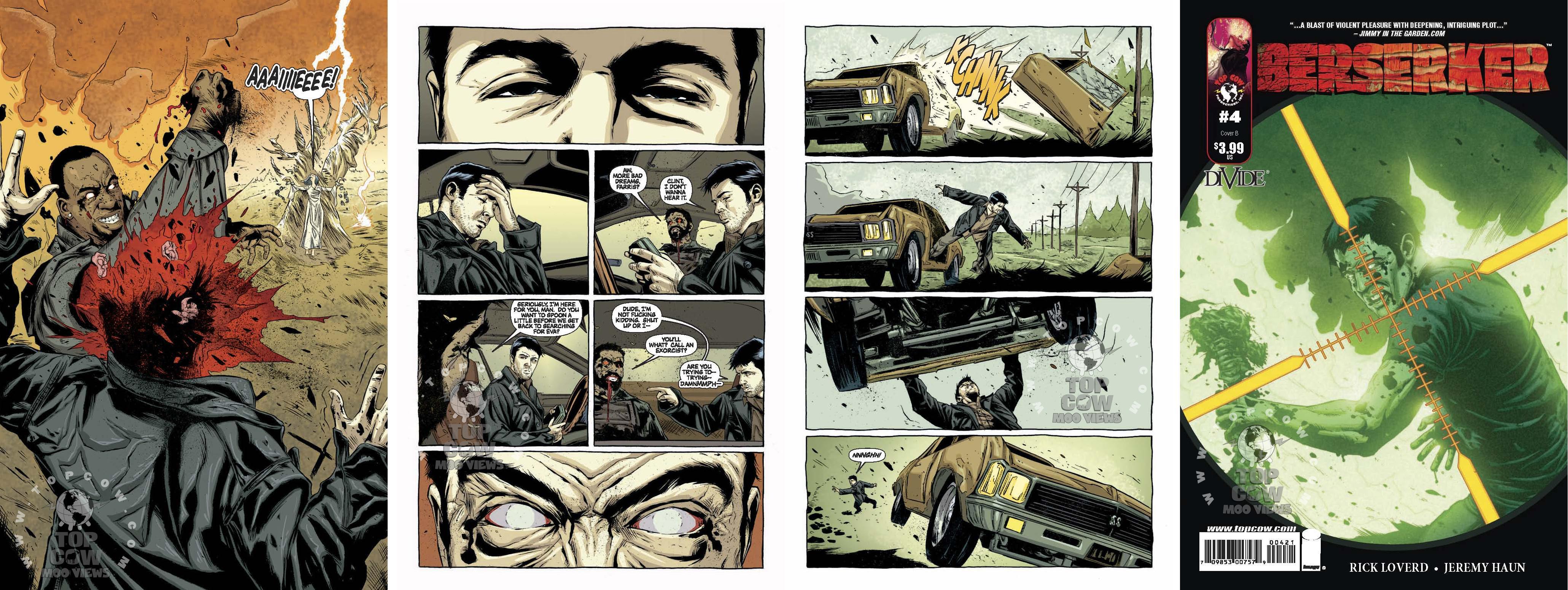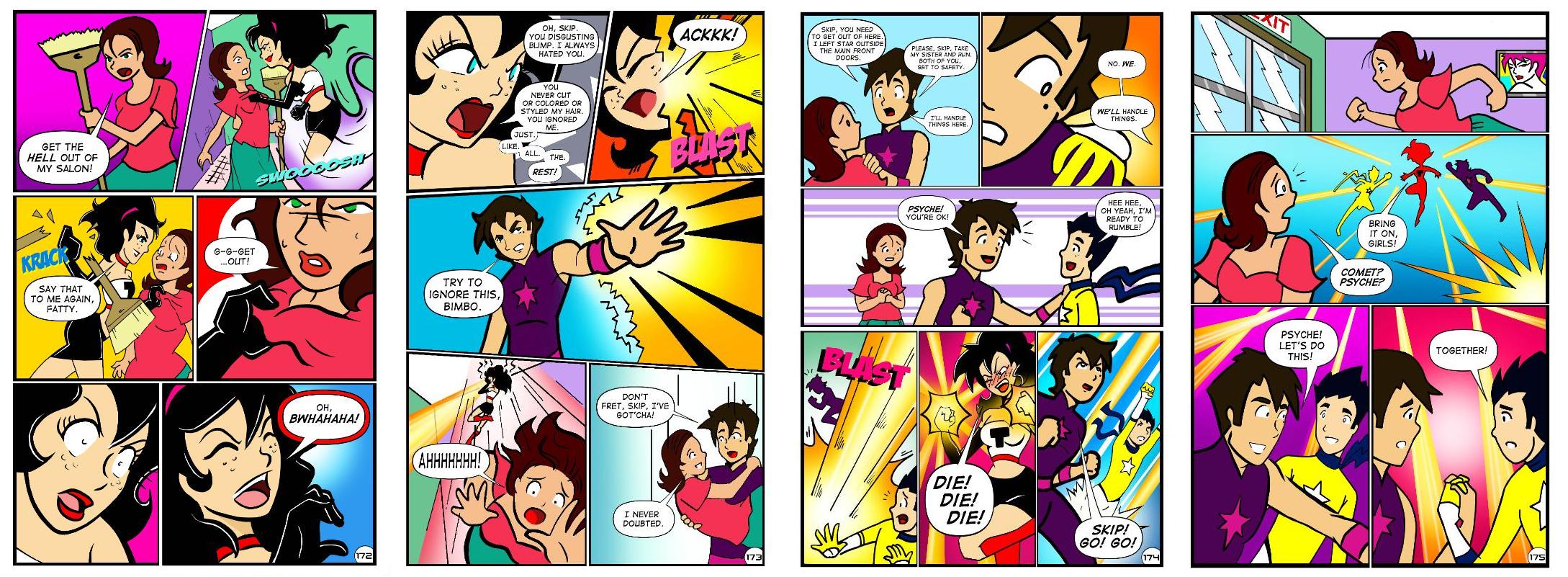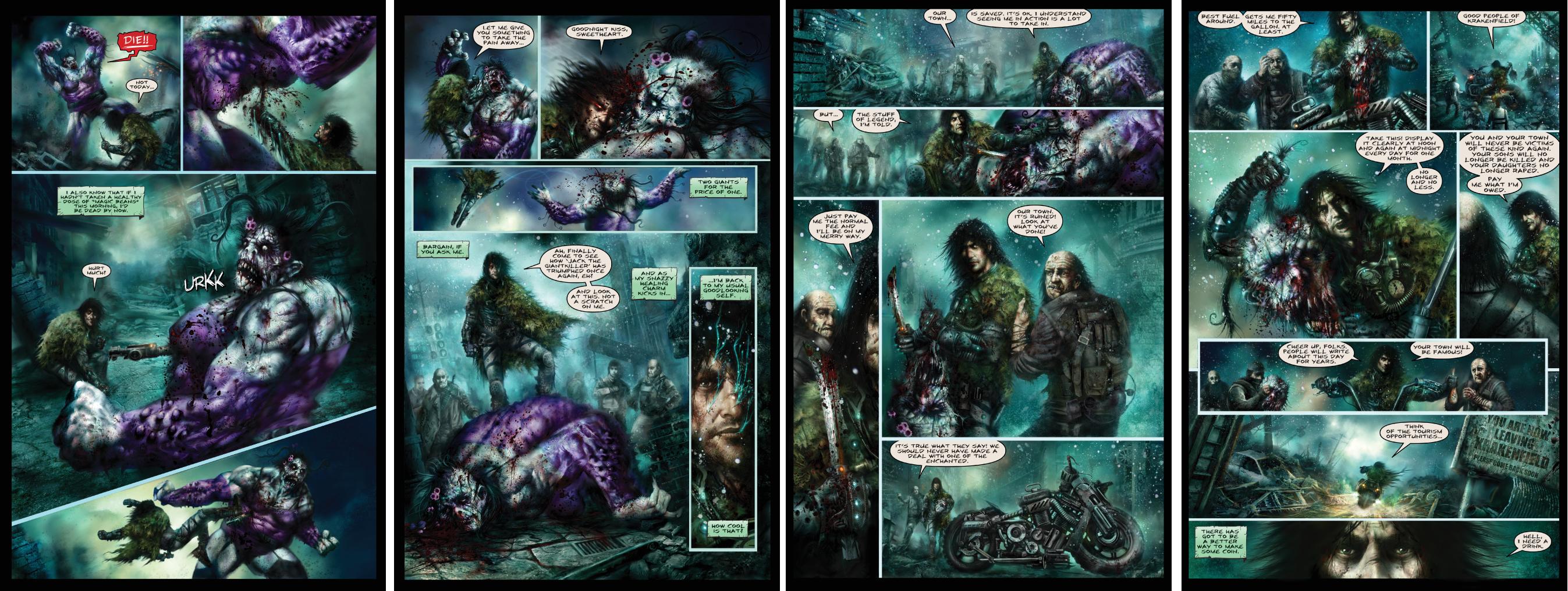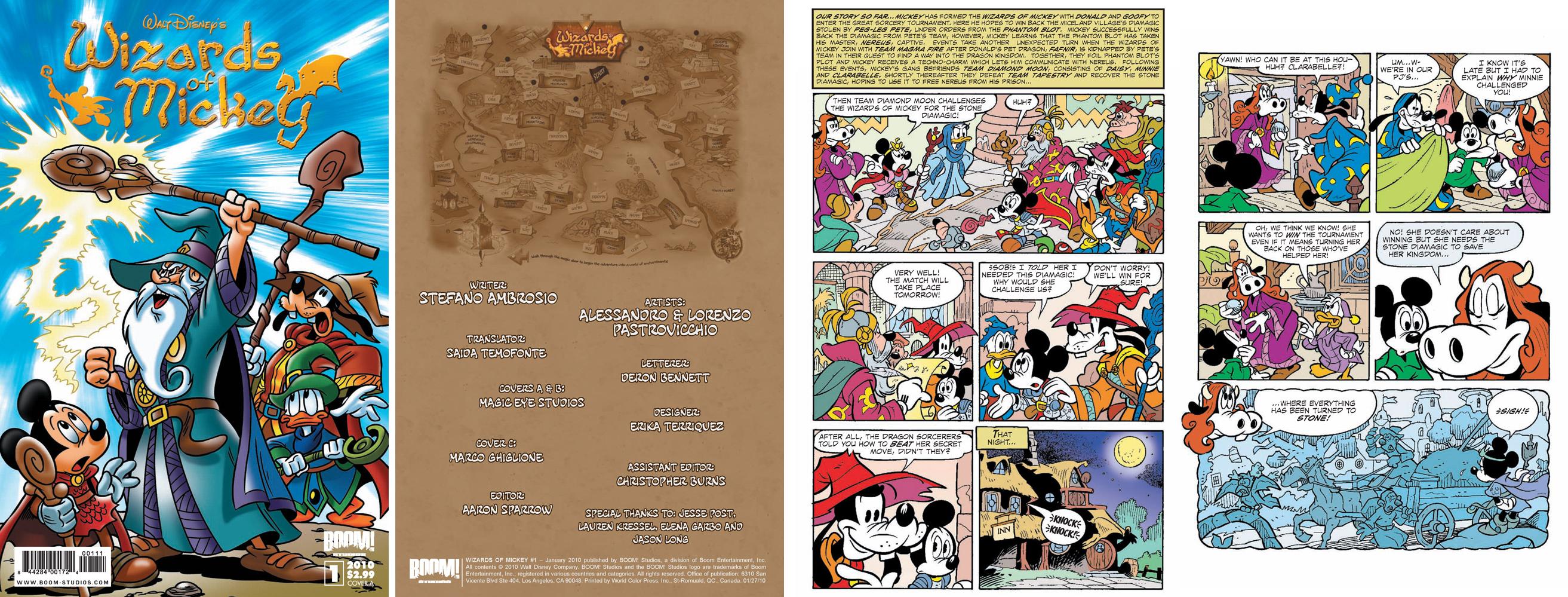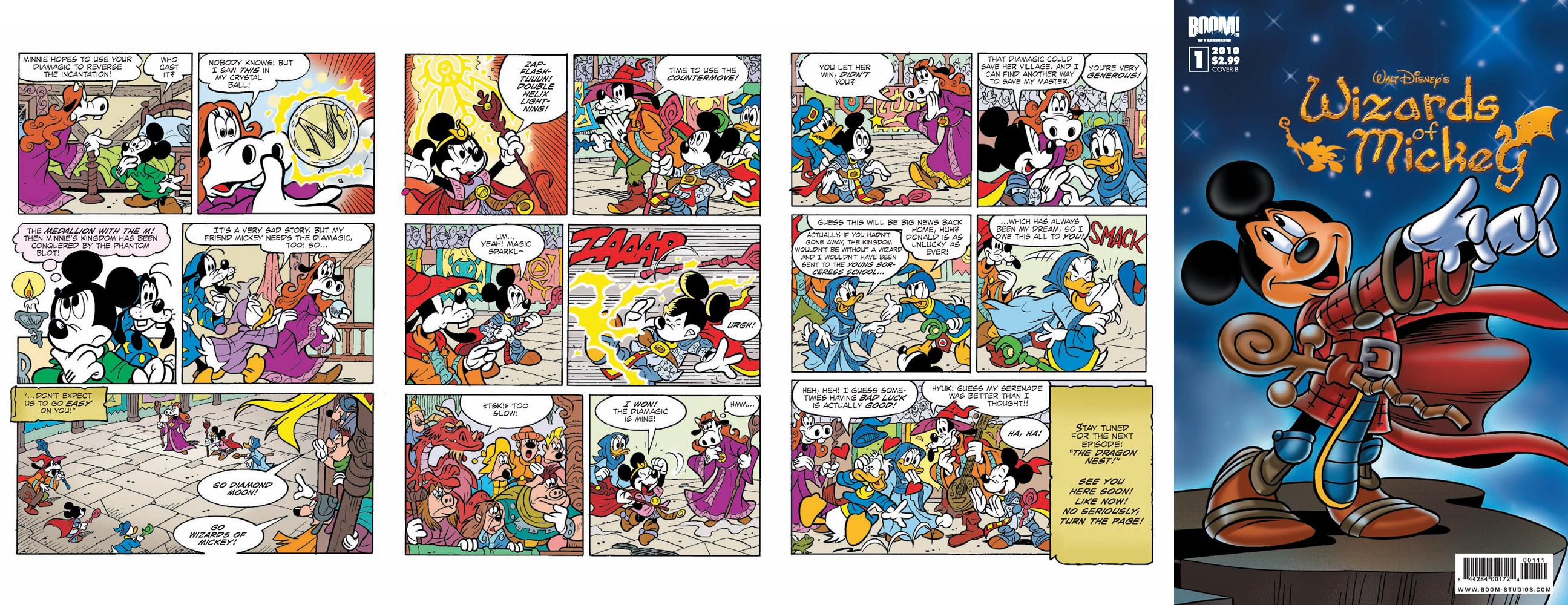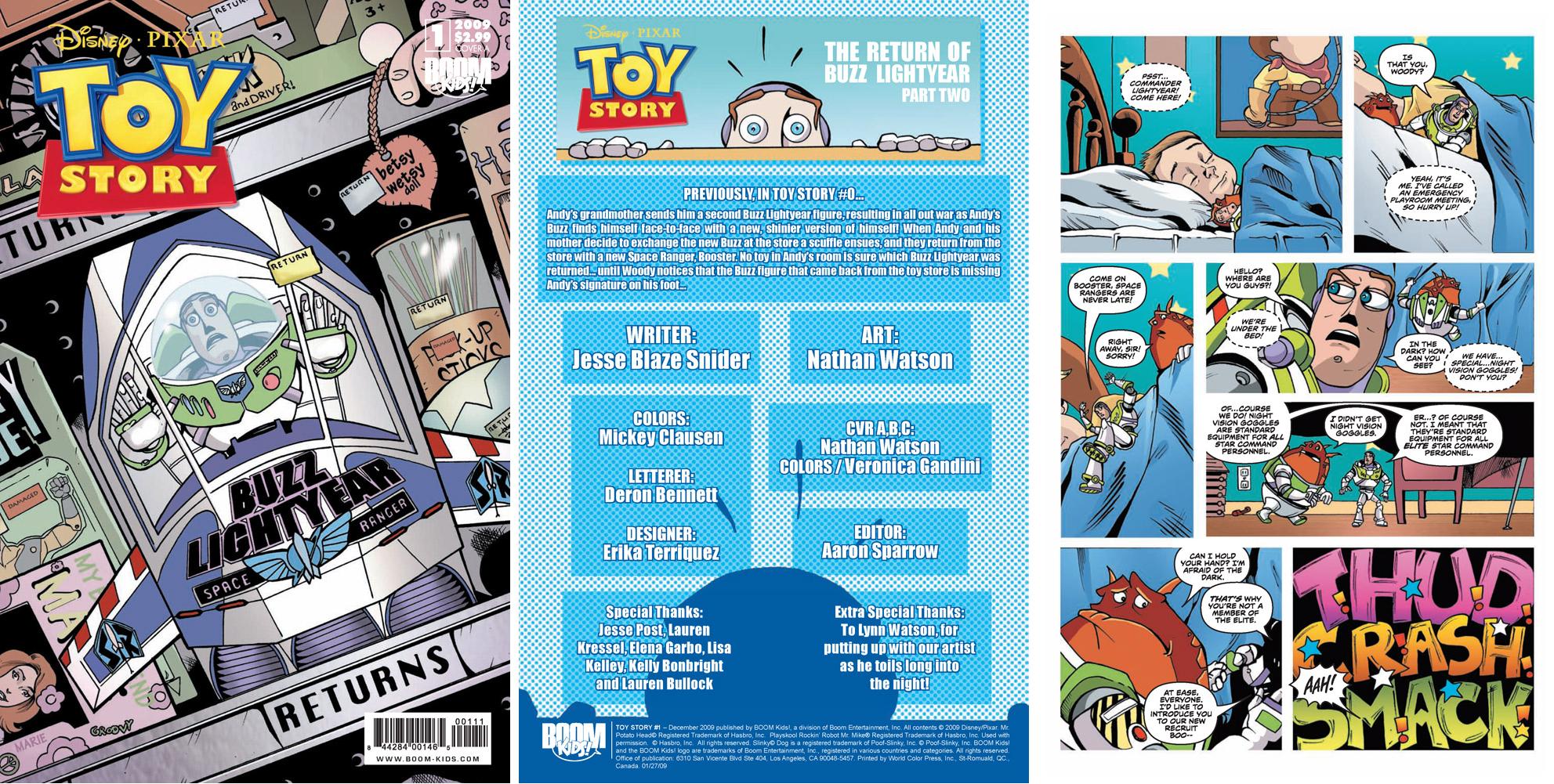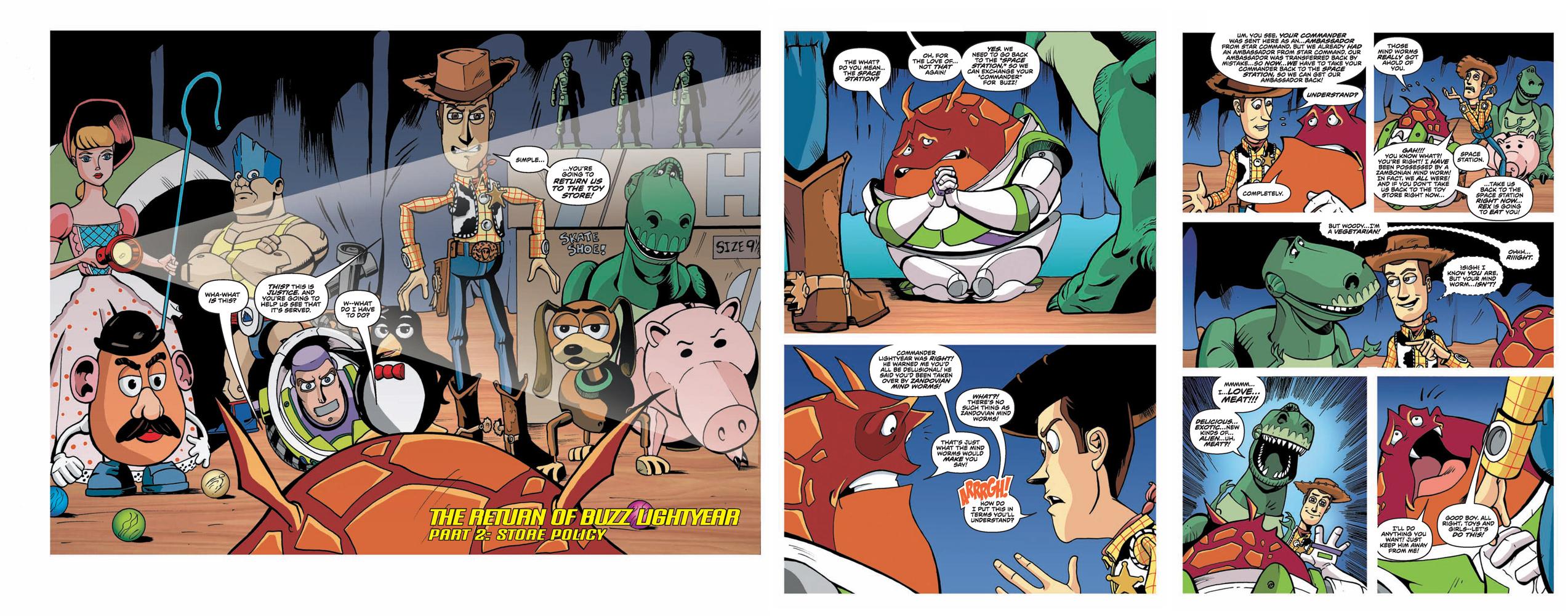
What’s SHOOT THE MESSENGER?
Well, AICN COMICS: SHOOT THE MESSENGER is your weekly one stop shop for comic book -EWS. What’s comic book –EWS? Well, it’s our hodge podge of everything not reviews here at AICN Comics. Sure you can find out the @$$Holes’ critical opinions of your favorite books every Wednesday at AICN Comics. But here, you’ll find special reports such as previews, interviews, special features, and occasionally news gathered here from our online brethren at Newsarama, CBR, Wizard, etc. Sure those guys are the best at reporting news as it breaks. Click on the links for the original stories. This column cuts the crap to run down all the vital information for those of you who don’t follow it as it comes in, and serves it all up with that special ingredient of @$$y goodness.
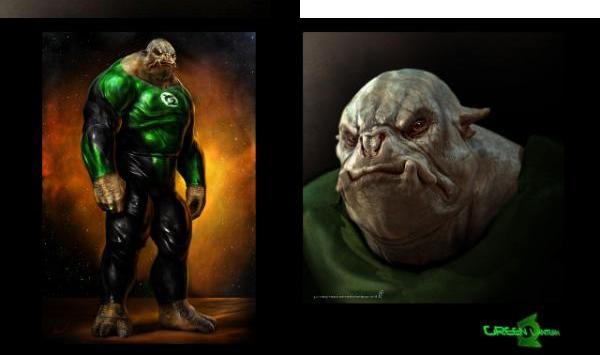 Hey, hi, howdy, all. Ambush Bug here with another edition of SHOOT THE MESSENGER. This week we start out with something that could be a total fake or it could be a super cool exclusive. Not sure, but I thought I’d run this story anyway. That little pic to the right may just be a first look at Kilowog, alien drill sergeant supreme of the Green Lantern Corps. Is this what the cranky poozer is going to look like in the new GREEN LANTERN movie or is it just bunk? Either way it’s a pretty damn sweet pic. Click on the link here and check out the story over at Cosmic Book News and decide for yourself whether it’s real or fake.
Hey, hi, howdy, all. Ambush Bug here with another edition of SHOOT THE MESSENGER. This week we start out with something that could be a total fake or it could be a super cool exclusive. Not sure, but I thought I’d run this story anyway. That little pic to the right may just be a first look at Kilowog, alien drill sergeant supreme of the Green Lantern Corps. Is this what the cranky poozer is going to look like in the new GREEN LANTERN movie or is it just bunk? Either way it’s a pretty damn sweet pic. Click on the link here and check out the story over at Cosmic Book News and decide for yourself whether it’s real or fake.
Next up, the cool guys behind the book STUDENTS OF THE UNUSUAL sent me the below pics of some US Army soldiers enjoying their comic over in Afghanistan. Thought I’d pass them along to you all. Check out the book’s website here. Glad to see these brave soldiers taking some time out to enjoy comics!

Bug asks Ian Edginton more than three wishes
about ALADDIN: LEGACY OF THE LOST!
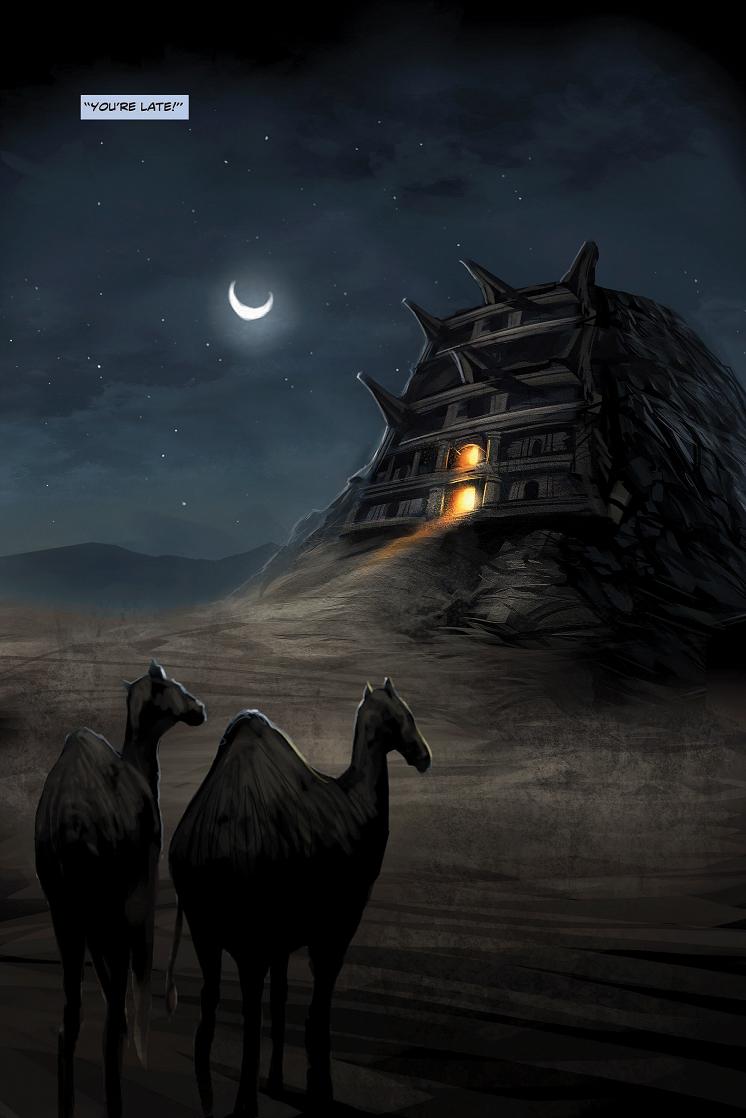
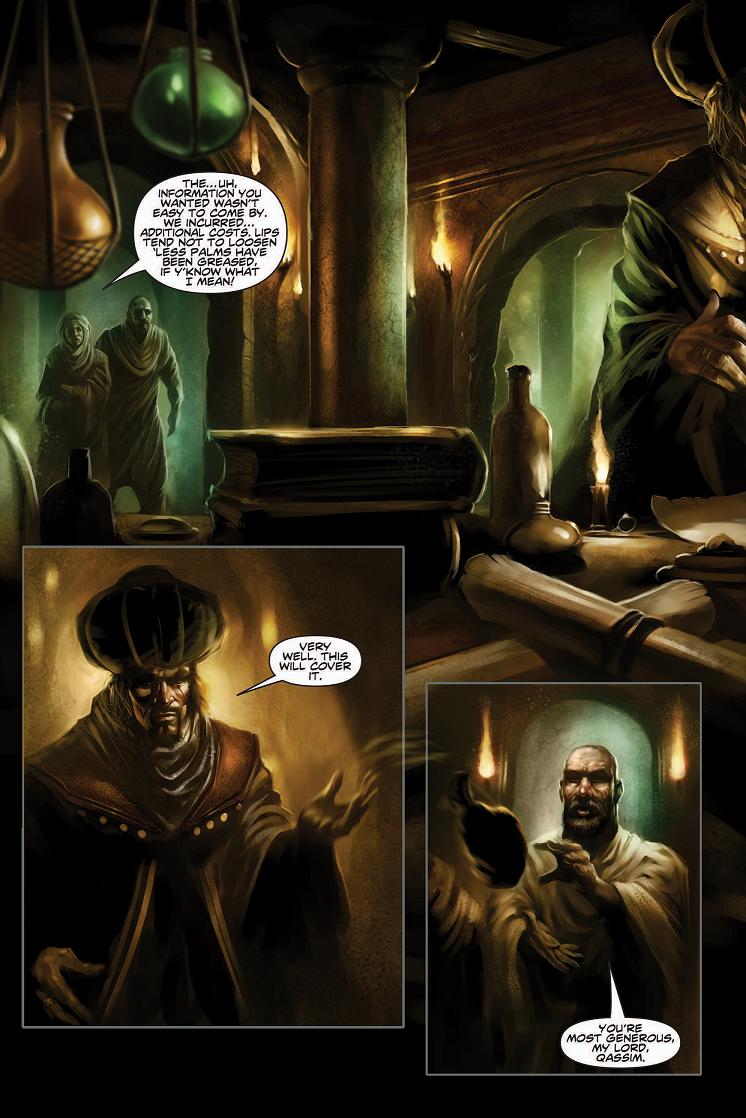
Hey folks, Ambush Bug here. Radical’s doing it again: it meaning churning out top tier art and stories seen through an epic scope. This time they are releasing ALADDIN: LEGACY OF THE LOST, a new take on the old legend. I had a chance to talk with writer Ian Edginton about this amazing new series. Throughout this interview are preview pages of ALADDIN: LEGACY OF THE LOST #1 in stores this week. Click the pics to make ‘em grow.
AMBUSH BUG (BUG): First and foremost, this was a pretty kick @$$ comic. What impressed me most, aside from the art (which I'll get into later), was the fresh take on the Aladdin character. Can you tell me a little bit about your approach to this character and how he's different from previous incarnations?
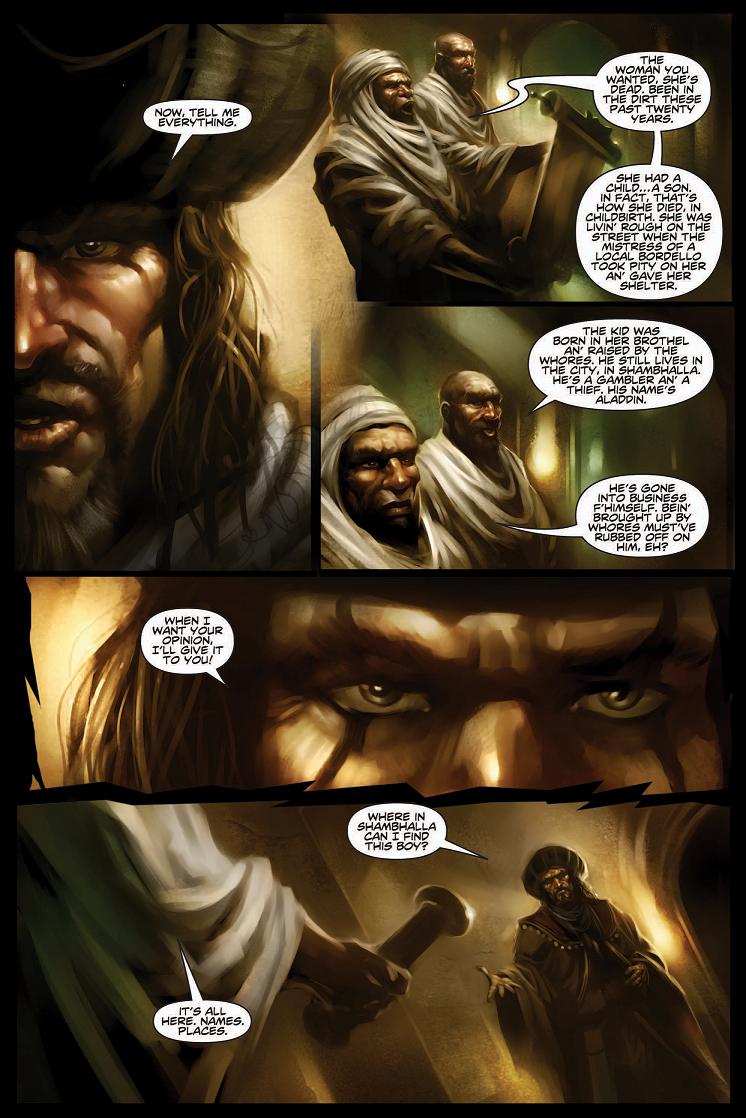 IAN EDGINTON (IE): The original, Middle-Eastern folk tale has been adapted and interpreted in dozens of different ways over the years, from the Disney animated movie, to that great British stage staple – the pantomime,- so everyone thinks they know who Aladdin is.
IAN EDGINTON (IE): The original, Middle-Eastern folk tale has been adapted and interpreted in dozens of different ways over the years, from the Disney animated movie, to that great British stage staple – the pantomime,- so everyone thinks they know who Aladdin is.What I wanted to do is ditch the harem pants and curly toed slippers and ground the story in its own version of the real world. The subject matter is indisputably fantasy but the people and the environments are ones we could identify with. So, okay, no we don’t know what it would be like to eek out a living on the streets of an ancient Middle Eastern city but we have seen documentaries and news reports of kids living rough on the streets in India and Brazil, so we can make that leap.
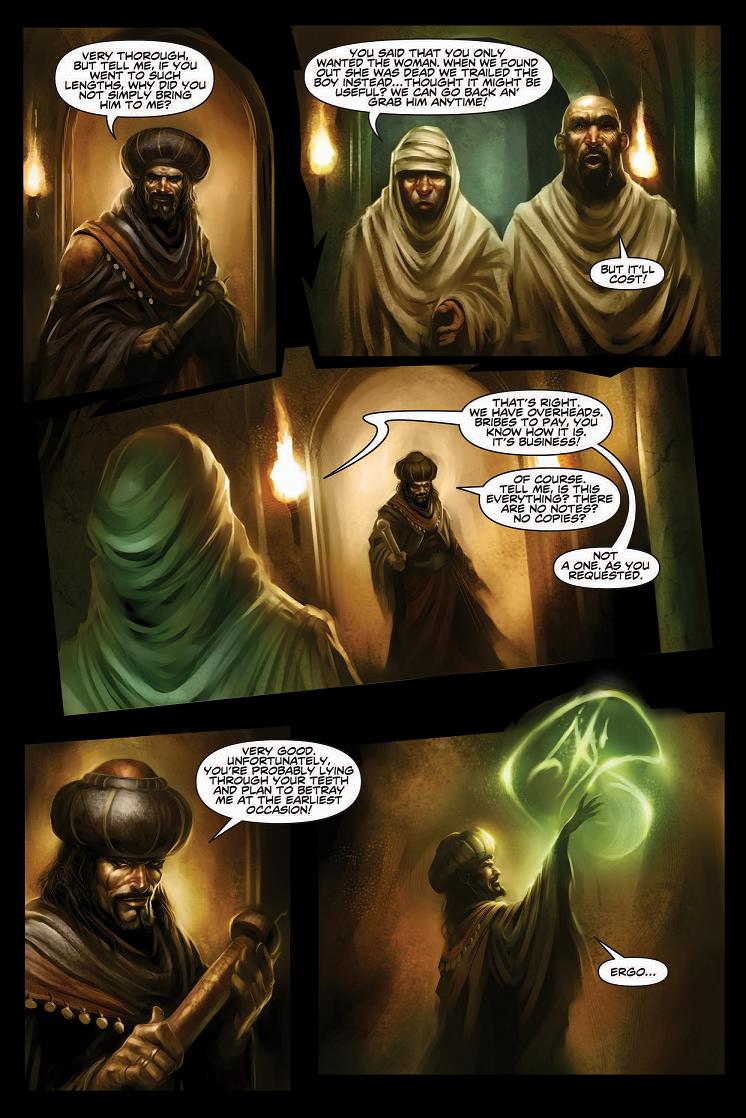 For Aladdin, growing up and living rough on the streets of a sprawling metropolis like Shambhalla, it wouldn’t leave you the doe-eyed innocent, forever bursting into song. You’d be come feral and predatory, doing whatever it took to survive. Consequently, he’s a thief, a gambler and a con artist. He’s also something of a pretty boy so he uses his cunning and good looks to exploit those around him. He thinks he’s a player but really he just alienating everyone who knows him. He’s callous, bitter and manipulative. When we meet him, the only certainty is that an early grave awaits him. He’s standing right on the edge of the abyss but doesn’t realise it. As protagonists go, he starts off as not the most likable of characters.
For Aladdin, growing up and living rough on the streets of a sprawling metropolis like Shambhalla, it wouldn’t leave you the doe-eyed innocent, forever bursting into song. You’d be come feral and predatory, doing whatever it took to survive. Consequently, he’s a thief, a gambler and a con artist. He’s also something of a pretty boy so he uses his cunning and good looks to exploit those around him. He thinks he’s a player but really he just alienating everyone who knows him. He’s callous, bitter and manipulative. When we meet him, the only certainty is that an early grave awaits him. He’s standing right on the edge of the abyss but doesn’t realise it. As protagonists go, he starts off as not the most likable of characters.Eventually he’s put in a position where he has to deal with some of his more unpleasant character traits as well as the consequences of his actions. He doesn’t set out to become a hero, it’s more an accidental side-effect of his trying to put right everything he screwed up in the first place.
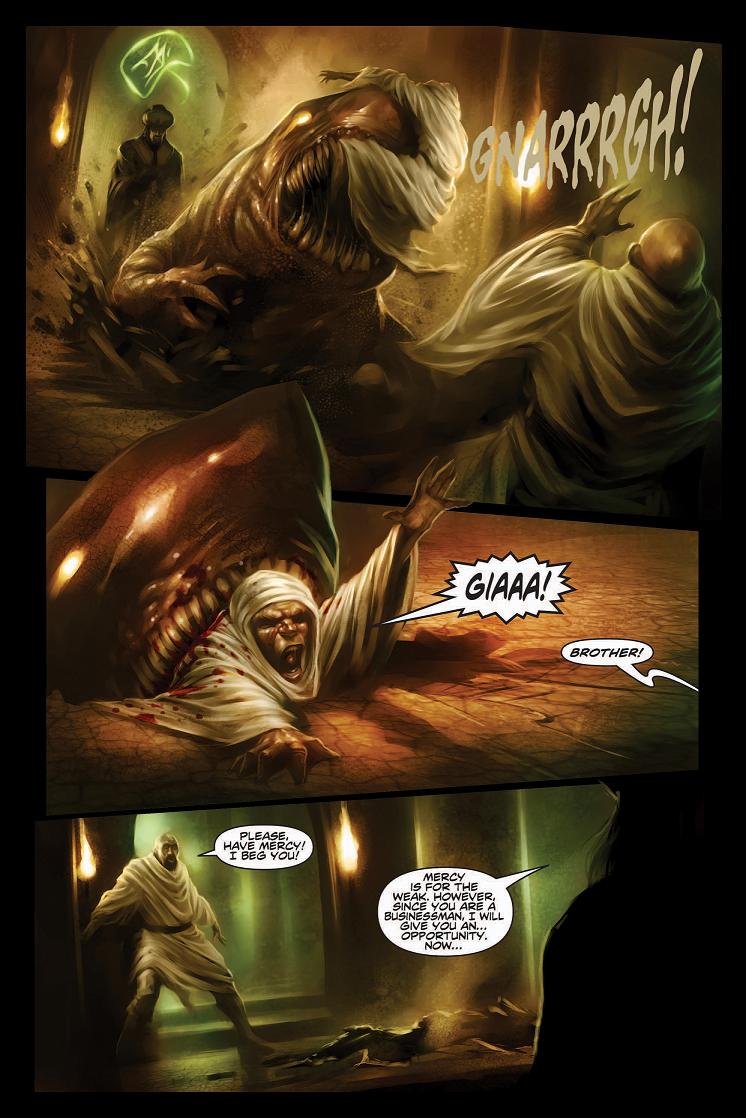
BUG: A character like Aladdin has a lot of baggage with it having been interpreted and reinterpreted in books, movies, and TV. What version of the character inspired you the most? Are there traits of other fictional or nonfictional characters that show up in Aladdin?
IE: To be honest, I didn’t really draw on any of the previous incarnations of Aladdin as they all pretty much stuck to the same story without much variation. Instead I thought, “Okay, what would it really be like to live in a place/world like that? What would it take to survive?”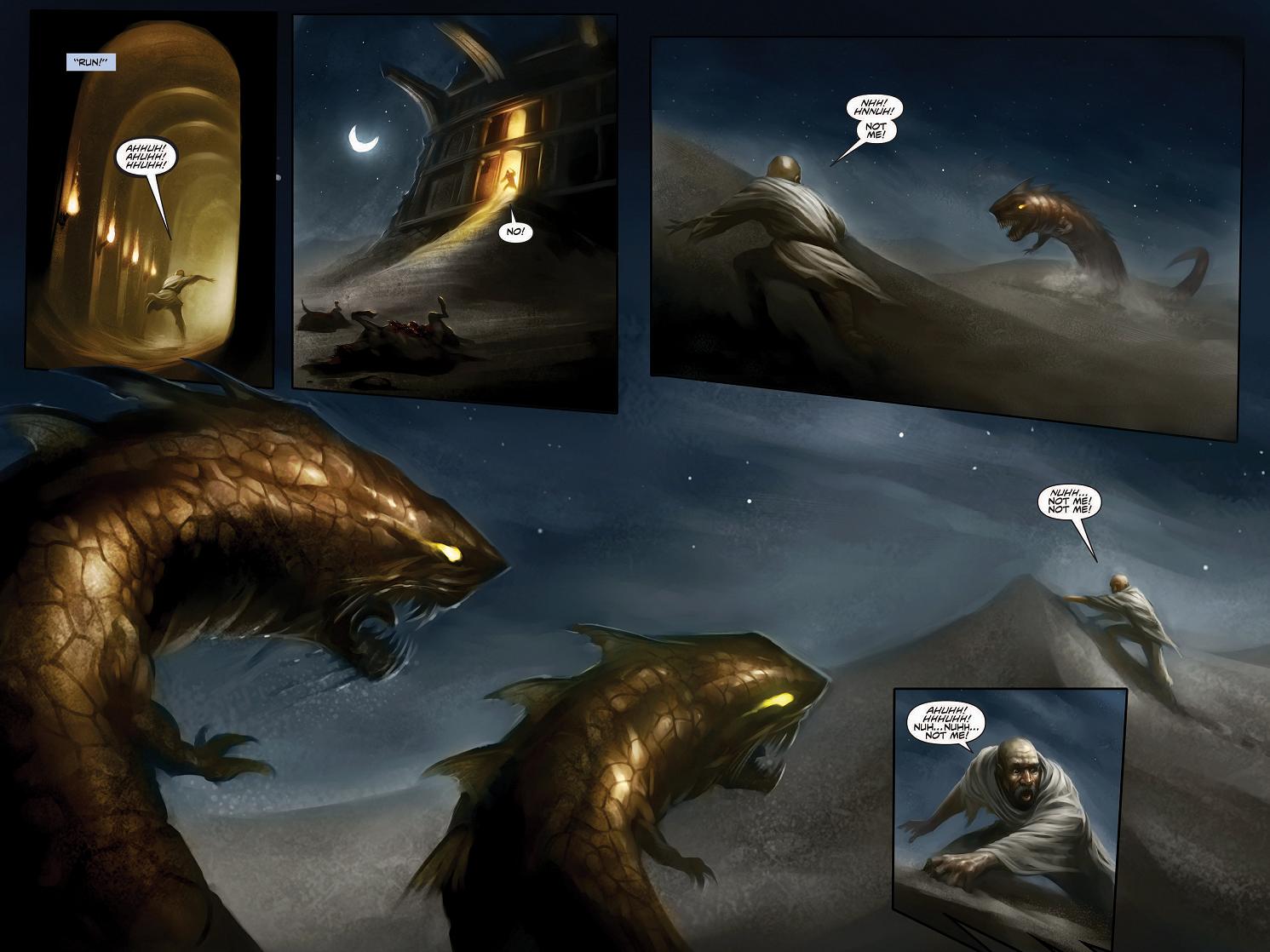 In ALADDIN: LEGACY OF THE LOST the story of Aladdin that everyone’s familiar with is mostly over within the first forty pages. After that, the story expands out to fill a considerably broader canvas. We find out why the sorcerer Qassim recruited Aladdin in particular, what is so important about him, and it’s not just that he’s a good thief. The djinn or genies of the Lamp and the Ring also get a lot more time centre stage. We discover their relevance to each other and how they came to be imprisoned in their respective cells. I also wanted to use this as a chance to play up exactly how damn scary they are.
In ALADDIN: LEGACY OF THE LOST the story of Aladdin that everyone’s familiar with is mostly over within the first forty pages. After that, the story expands out to fill a considerably broader canvas. We find out why the sorcerer Qassim recruited Aladdin in particular, what is so important about him, and it’s not just that he’s a good thief. The djinn or genies of the Lamp and the Ring also get a lot more time centre stage. We discover their relevance to each other and how they came to be imprisoned in their respective cells. I also wanted to use this as a chance to play up exactly how damn scary they are. 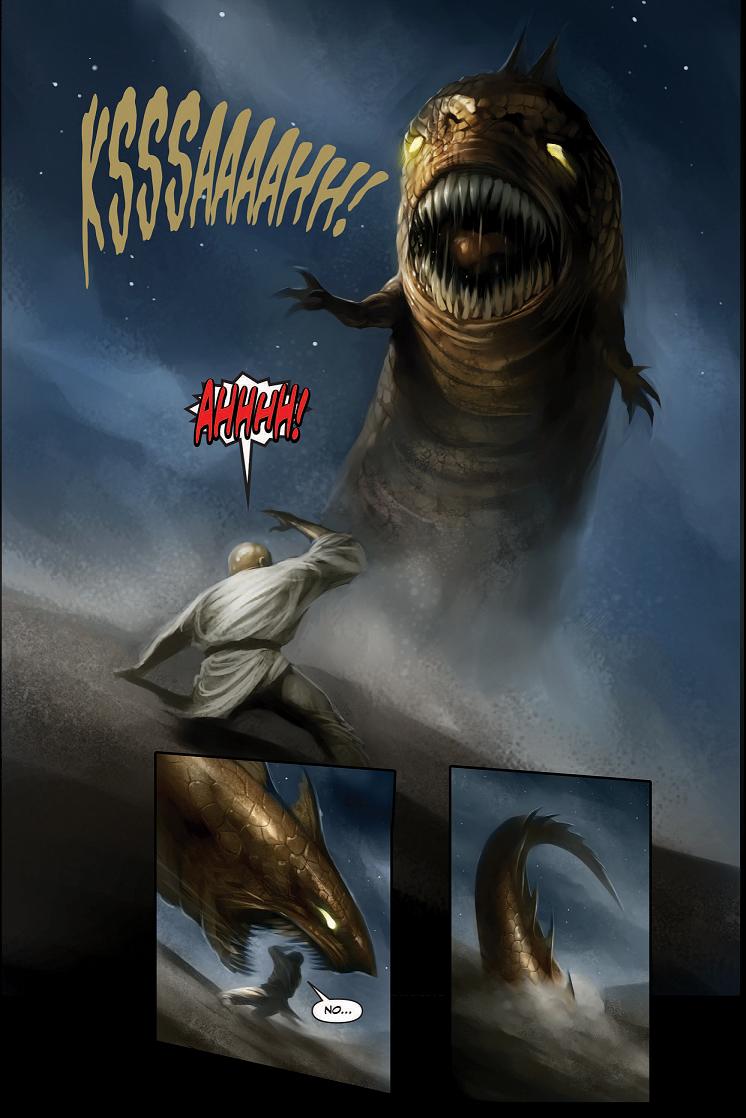 They are terrifying, monstrous, unearthly creatures that are slaved to their master’s will by just a thin sliver of magic. It’s like holding a tiger by the tail. They may be compelled to grant you three wishes but they’ll do their damnedest to make sure those wishes well and truly screw you up! I also made magic itself toxic. You mess with it for too long, it will start to consume you, body and soul.
They are terrifying, monstrous, unearthly creatures that are slaved to their master’s will by just a thin sliver of magic. It’s like holding a tiger by the tail. They may be compelled to grant you three wishes but they’ll do their damnedest to make sure those wishes well and truly screw you up! I also made magic itself toxic. You mess with it for too long, it will start to consume you, body and soul.BUG: What type of research goes into a project like this?
 IE: Not a great deal as it happens, as I already knew the direction I wanted to go in from day one. I did re-read the original story and some of the background to it. Then by way of a guilty pleasure, I used it as an excuse to watch some of my favorite fantasy films such as the LORD OF THE RINGS trilogy, THE SWORD AND THE SORCERER (so bad it’s brilliant) THE THIEF OF BAGHDAD, THE GOLDEN VOYAGE OF SINBAD, SINBAD AND THE EYE OF THE TIGER, that sort of thing.
IE: Not a great deal as it happens, as I already knew the direction I wanted to go in from day one. I did re-read the original story and some of the background to it. Then by way of a guilty pleasure, I used it as an excuse to watch some of my favorite fantasy films such as the LORD OF THE RINGS trilogy, THE SWORD AND THE SORCERER (so bad it’s brilliant) THE THIEF OF BAGHDAD, THE GOLDEN VOYAGE OF SINBAD, SINBAD AND THE EYE OF THE TIGER, that sort of thing.BUG: In a nutshell, can you explain what the story of ALADDIN: LEGACY OF THE LOST is all about?
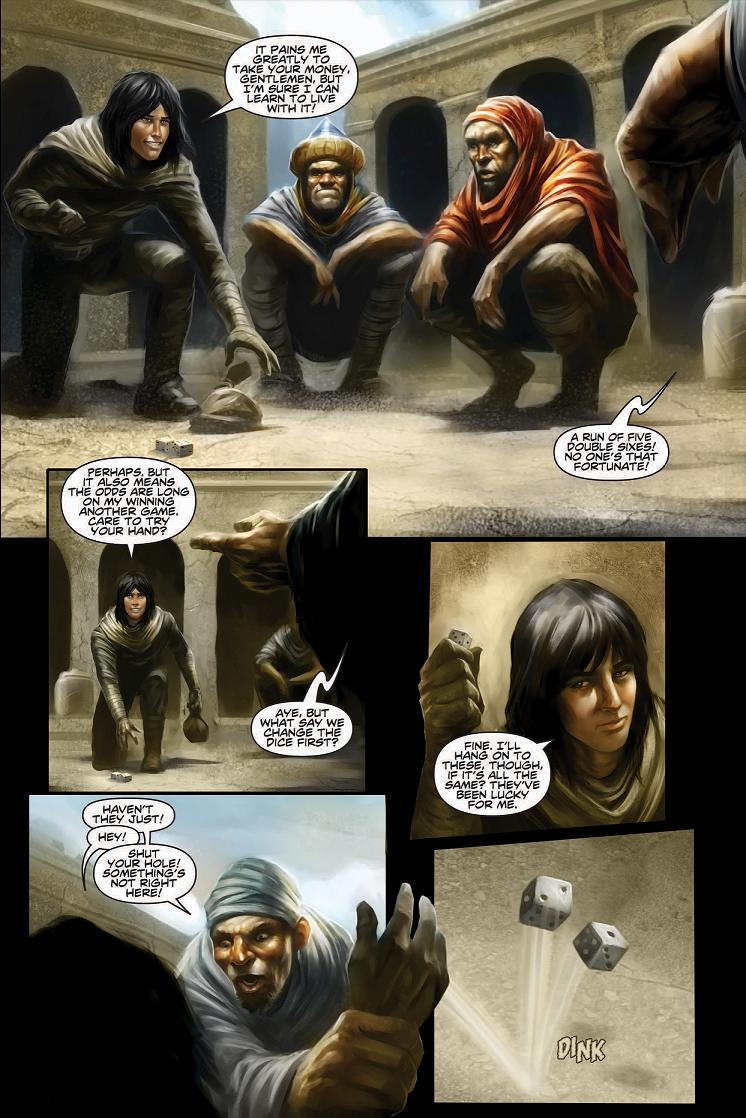 IE: Not without giving too much away. Basically, it’s the classic story of Aladdin up to a certain point…then the story expands to reveal Aladdin’s origin and that of the djinn of the Ring and the Lamp.
IE: Not without giving too much away. Basically, it’s the classic story of Aladdin up to a certain point…then the story expands to reveal Aladdin’s origin and that of the djinn of the Ring and the Lamp.The reason why the sorcerer Qassim needs them not to mention the return of a certain Captain Sinbad. There are also lost lands filled with fantastical creatures, murderous statues, winged chimera and an astonishing squid-ship!
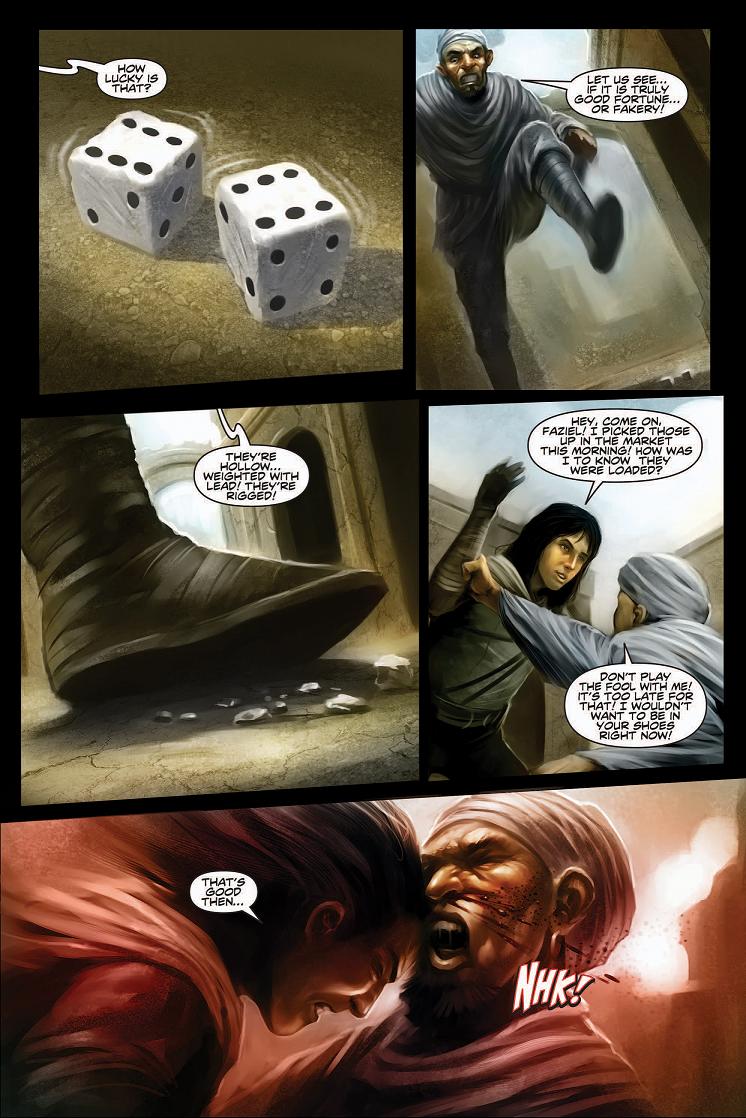
BUG: The art, as usual with all Radical Comics, is fantastic. Tell me a little bit about Patrick Reilly and Stjepan Sejic's art in this one.
IE: The art is phenomenal. I couldn’t wait for the pages to come in, to see what they’d done. While I’ve tried to give the story a real-world sensibility, there’s also a sweeping epic feel to it all which is reflected superbly in the art. It has a richness and depth. Sumptuous would be the best way to describe it. It’s the first time I’d worked with Patrick and I’d worked with Stjepan before on the ANGELUS one-shot for Top Cow’s Pilot Season a while back so I knew he’d turn in an amazing job.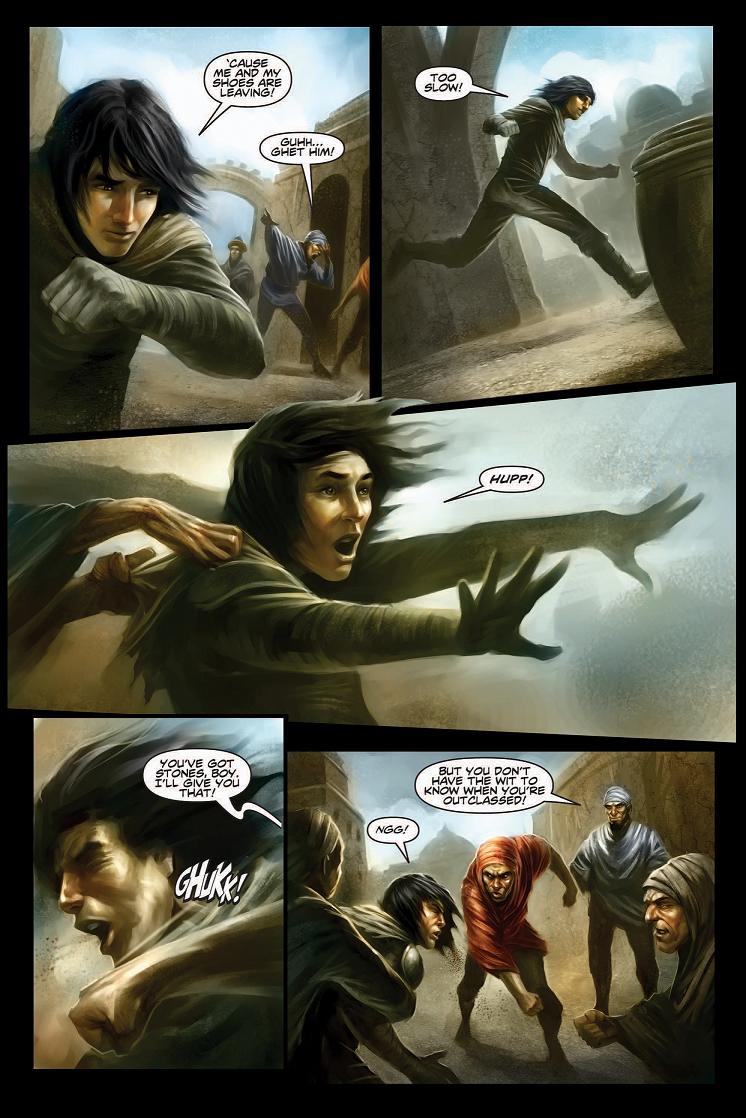
BUG: After scripting, were you very much involved in character design or any other aspects of the art process?
IE: The primary characters were all pretty much set when I came onboard but there were others that I introduced, such as the insectoid sorceress The Mantis Queen and her subterranean city, that I got to have a say in how they looked. At the end of the day though, unless I feel really strongly about how I want a character or environment to look, I’ll defer to the artist. After all, they’ve got a better visual eye than me, they know what works and they’ve got to draw the damn thing for page after page!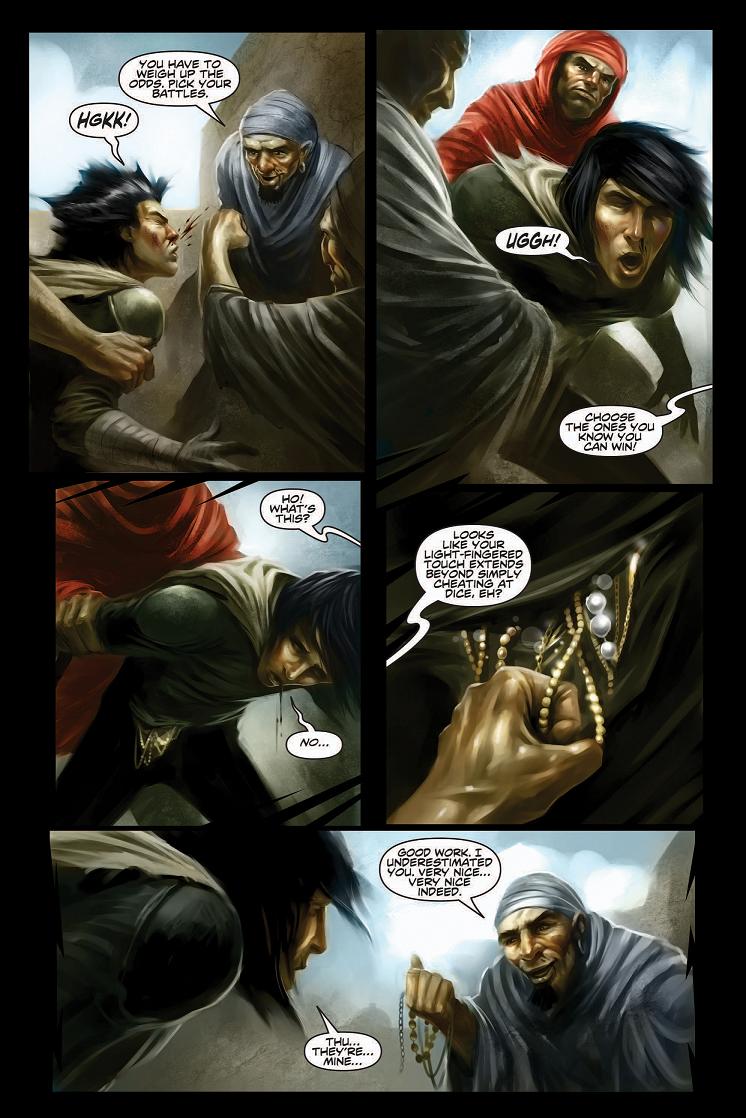
BUG: What's it been like working for Radical having worked with most of the other major companies? How does the company differ from the rest?
IE: I wouldn’t necessarily say that Radical differs in any major way from any of the other companies I’ve worked for. They’re professional, you can’t ask for anything more.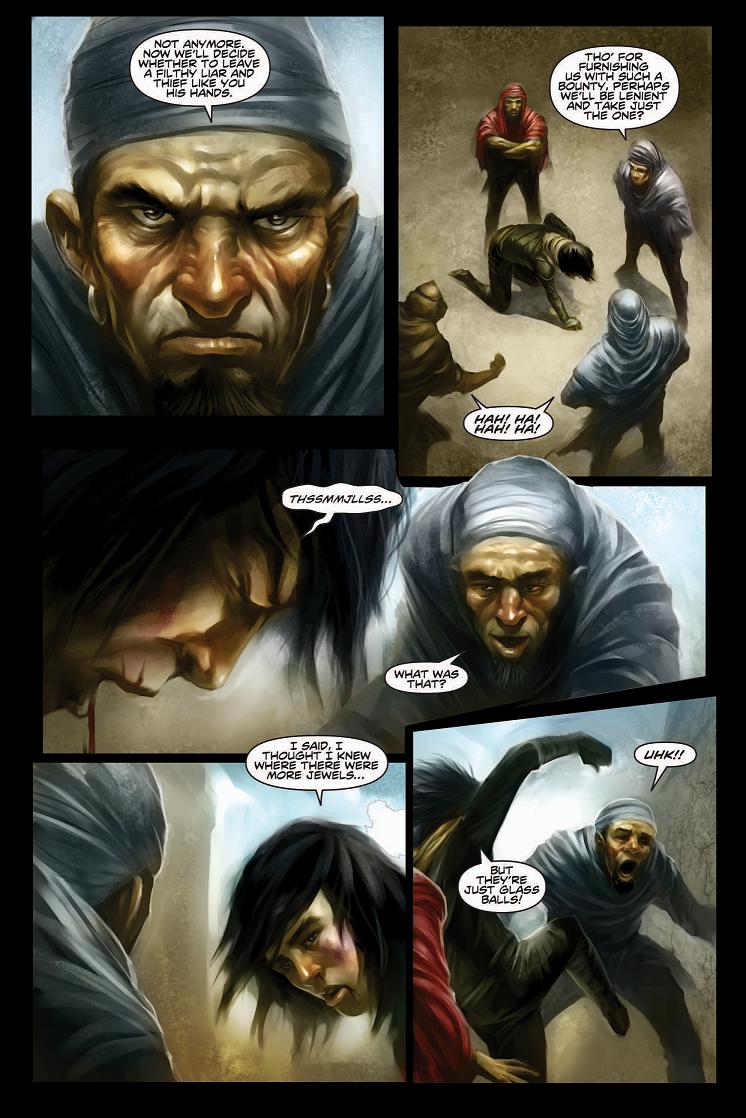
BUG: Do you see yourself doing more ALADDIN miniseries in the future?
IE: I’d love to. I have more ideas ready to roll but we’ll have to see how this series goes down first.BUG: It's been the trend at Radical that movie deal announcements follow the release of their books pretty quickly. Any talks with Hollywood about an ALADDIN movie?
IE: I wouldn’t be surprised if there are but you’re talking to the wrong guy. I’m just the script jockey, they don’t let me near such things!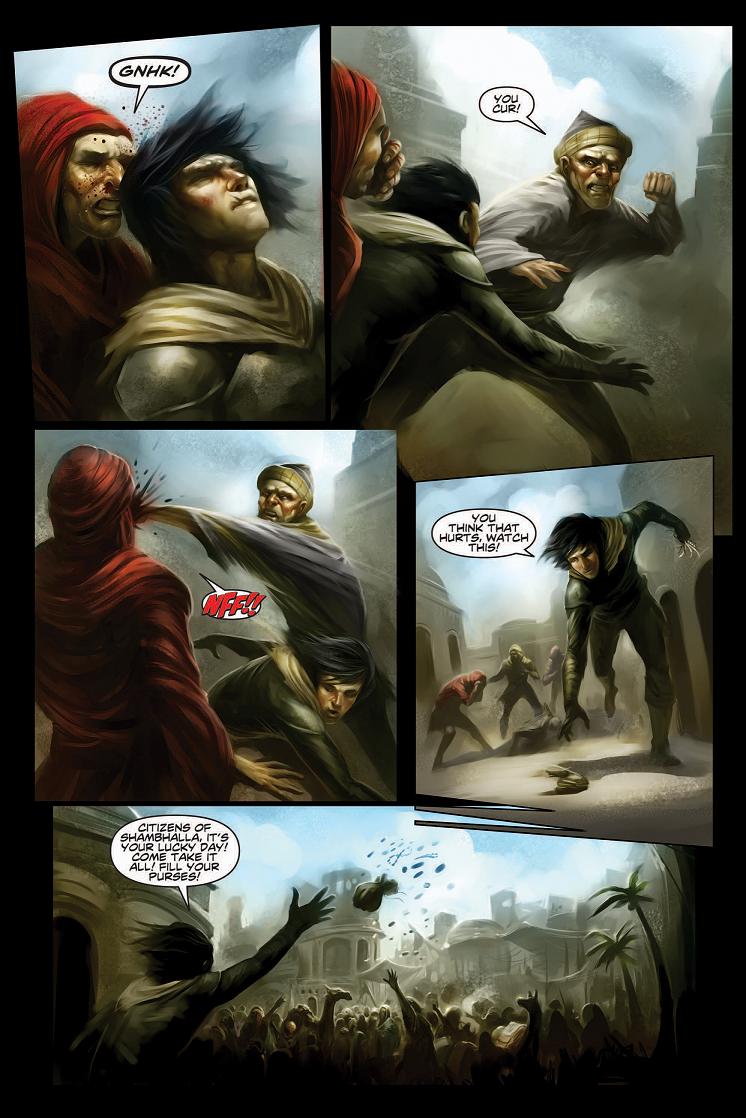
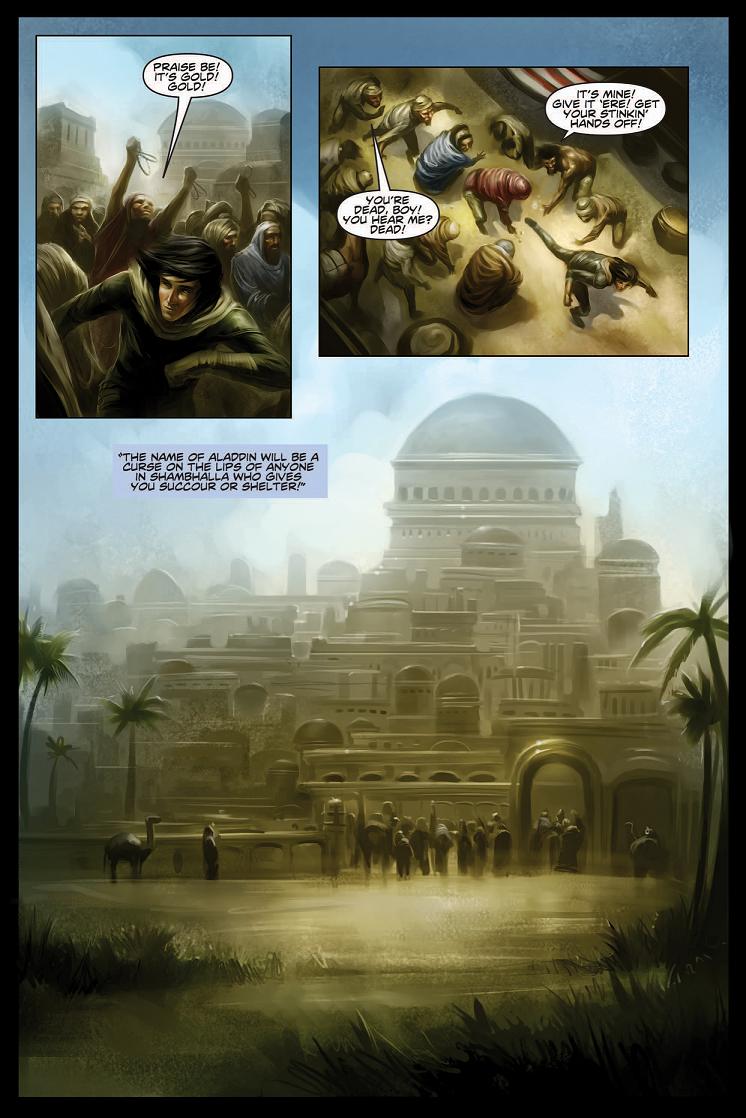
BUG: Last chance, why should folks pick up ALADDIN when it hits the shelves and when will it be released?
IE: What’s not to like? It’s a sprawling, brawling sword and sorcery epic with a great story and art to die for. The money’s all there on the pages and at $4.99 for 64 pages for each issue, it’s a hell of a deal. Issue #1 will be on sale February 3rd.Ambush Bug is Mark L. Miller, reviewer and co-editor of AICN Comics for over eight years and one of the original @$$holes. Check out his comic book shorts from Cream City Comics’ MUSCLES & FIGHTS VOL.3 and MUSCLES & FRIGHTS VOL.1 on his ComicSpace page. Bug was interviewed here and here at Cream City Comics and here and here about his comic from Bluewater Comics, VINCENT PRICE PRESENTS: THE TINGLER #1-2. Look for more comics from Bug in 2010, including ROGER CORMAN PRESENTS DEATHSPORT, and the just announced vampire miniseries NANNY & HANK (and check out Jazma Online’s new interview with Bug about NANNY & HANK here). Bug’s latest comic is VINCENT PRICE PRESENTS #16: WITCHFINDER GENERAL on sale February 24, 2010. Fanboy Radio recently interviewed Bug about it here.
Matt Adler chats with
THE UNWRITTEN’s Peter Gross!
Matt Adler here with the second part of my talk with the guys behind DC Vertigo’s THE UNWRITTEN. Check out last week’s interview with Mike Carey here. And here’s what Mr. Gross had to say…
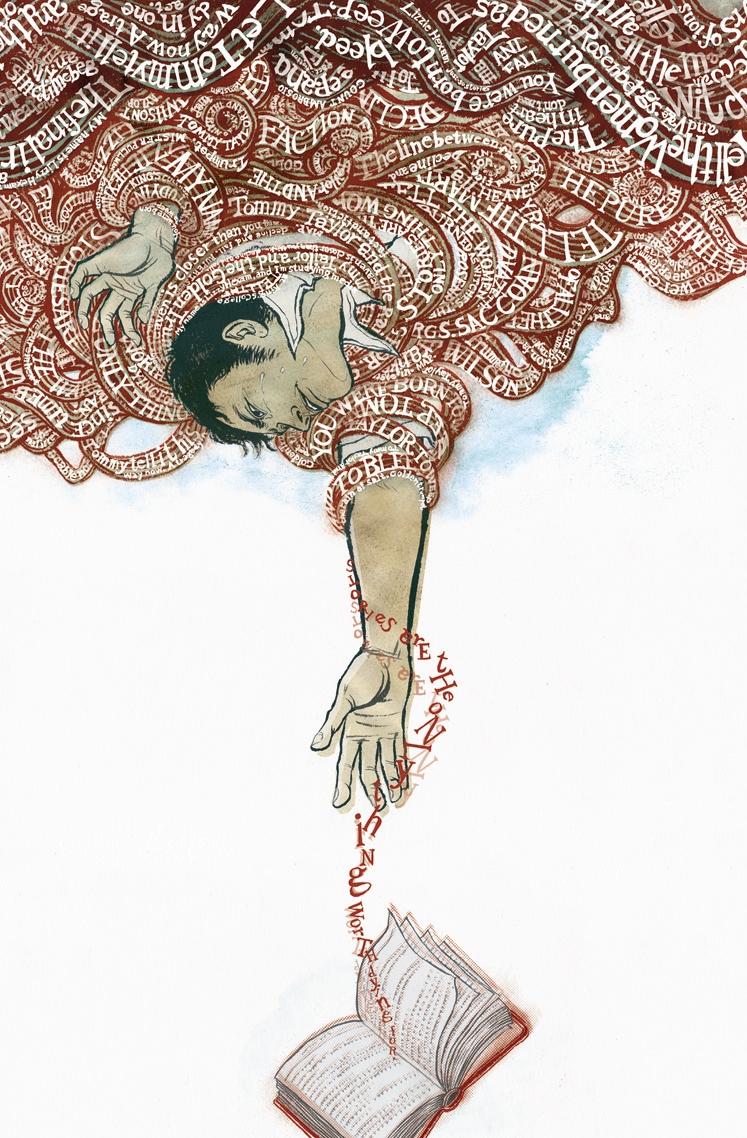 MATT ADLER (MA): Let me start off by getting your thoughts on a few of the same subjects I asked Mike about: you guys were paired together on LUCIFER for a number of years, and obviously that went well enough that you wanted to do more work together. What made it an enjoyable experience to work with him?
MATT ADLER (MA): Let me start off by getting your thoughts on a few of the same subjects I asked Mike about: you guys were paired together on LUCIFER for a number of years, and obviously that went well enough that you wanted to do more work together. What made it an enjoyable experience to work with him?
PETER GROSS (PG): I think we work really well together…why? Why do we work so well together? I think partly it has to do with the fact that I’ve written stuff too, and I think we have a really similar approach to story, but also, we have enough of a trusting relationship now that I can go 100% into this and really dig into it, and try things, and change things, and bring a lot more to the plate than you usually get to bring in a relationship with a writer. So, we just dig a lot deeper into the story, and I think that makes the whole thing a lot more fun for both of us.MA: So your sensibility meshes with his?
PG: Yeah, it really does. It’s very rare that we’ll dig down into the story and end up in really different places. Like a lot of times, I’ll get an idea for something, and I’ll run it by Mike, and it’s really rare when he’s just like “no, that’s really a terrible idea.” (laughs) Usually it’s like “oh, I really like that idea, how about if this…” and we just end up at different levels of the story, kind of building off each other. And it’s a strange thing…in general, I’d say I kind of lean towards stuff from one creator, I like the stuff from someone who writes and draws. But in this case, it’s better with the two of us somehow; we end up with something that I couldn’t get to writing and drawing, and he couldn’t get to because he can’t draw at all! (laughs) But it ends up better than the best of either of us on our own.MA: How did you guys come up with the idea for THE UNWRITTEN?
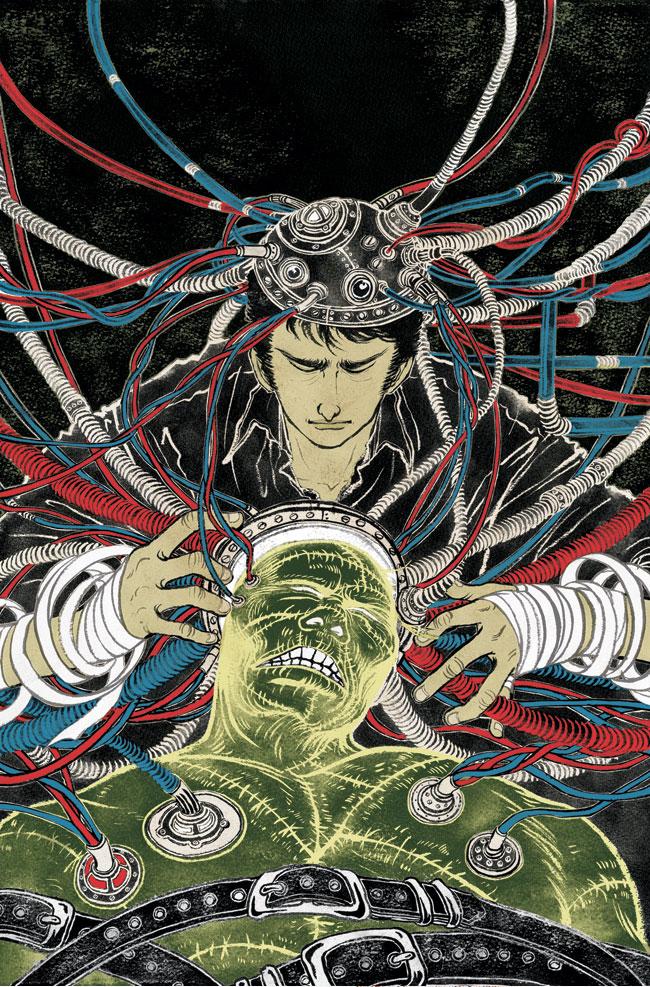 PG: We had done some pitches as we were nearing the end of LUCIFER, and some things almost happened, didn’t happen, got turned down, and it was getting kind of frustrating. Mike went over to Marvel, and I kind of told Karen (Berger, Vertigo’s head editor) one day, “I think Mike and I have a real PREACHER-level quality thing in us,” in the sense that PREACHER was a series that Garth (Ennis) and Steve (Dillon) did after they had really developed as a team on HELLBLAZER. And we just wanted to give it one more pitch. So we both sat down and wrote to each other an idea that we had. Mine was about a guy whose dad writes a book about him, names it after him, and it becomes the most famous book ever written, leaving the legacy of that on the kid, and why would the parent do that? That part of it was my idea. Mike had an idea about this guy who gets this horn that when you blow it, it ends an age of mankind and starts another one. So we both sent our ideas to each other, and then we both kind of went “Oh, those are really different. Which one‘s gonna win?” (laughs) And I think I was the one who kind of jokingly said “Y’know, it’s too bad we can’t just combine these.” And then I kind of sat back and thought, “Y’know, we really COULD combine these.” So we took our two ideas, melded them into one, and found out that underneath, we were both trying to address some of the same deeper issues. So it was really easy to merge it together.
PG: We had done some pitches as we were nearing the end of LUCIFER, and some things almost happened, didn’t happen, got turned down, and it was getting kind of frustrating. Mike went over to Marvel, and I kind of told Karen (Berger, Vertigo’s head editor) one day, “I think Mike and I have a real PREACHER-level quality thing in us,” in the sense that PREACHER was a series that Garth (Ennis) and Steve (Dillon) did after they had really developed as a team on HELLBLAZER. And we just wanted to give it one more pitch. So we both sat down and wrote to each other an idea that we had. Mine was about a guy whose dad writes a book about him, names it after him, and it becomes the most famous book ever written, leaving the legacy of that on the kid, and why would the parent do that? That part of it was my idea. Mike had an idea about this guy who gets this horn that when you blow it, it ends an age of mankind and starts another one. So we both sent our ideas to each other, and then we both kind of went “Oh, those are really different. Which one‘s gonna win?” (laughs) And I think I was the one who kind of jokingly said “Y’know, it’s too bad we can’t just combine these.” And then I kind of sat back and thought, “Y’know, we really COULD combine these.” So we took our two ideas, melded them into one, and found out that underneath, we were both trying to address some of the same deeper issues. So it was really easy to merge it together. MA: So you said you feel this series has the potential to be of PREACHER-level quality; what is it about it that makes you feel that?
PG: Well, it’s two creators who are really at the top of their game. That’s the one thing I’ve realized as we’re working on it; there just magical stuff happening that’s thrilling to us. We’ll come up with an idea, and I’ll get shivers up my spine ‘cause it just fits with the story so well, and it deepens it so much, and I figure if it’s that thrilling to us, it’s probably going to be that thrilling to the readers hopefully. But also…Mike can write a lot of stuff, but as an artist, I can basically only work on this one project; I can squeeze in a couple of other things, but nothing major. This is going to be it for me for the next 6 or 7 years. And I just really wanted it to have a lot of meat and be about something. So I think we both talked a lot about what kind of story do we want to tell that really bears on how we feel about life and answers some questions for us. So it’s completely different from something like PREACHER in that sense; I guess it’s more like SANDMAN in a way. It’s really kind of a meditation on a lot of things that we believe about life, and done in a way that I think is a really ripping good story.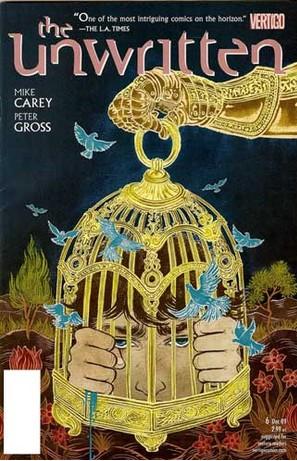
MA: Is this a very personal work for you?
PG: Yeah, I think it is. One of the things that kind of fascinated me, especially at Vertigo, was that a bunch of non-conformist, atheist, non-traditional people will sit down and do a story about God, and in the context of that story, fervently believe…like, I have no problem doing a story about God. I have big problems with believing in God in real life. So I kind of wanted to address that, I wanted to reconcile that, and for me, I realized that if you keep it in stories, religion can be tremendously powerful in the context of that story, and I have no problems with it.MA: There’s a bit in issue #7 where Tommy encounters Frankenstein’s monster, and he says disbelievingly, “If YOU’RE real, then Br’er Rabbit is real. And Dracula. And the Tooth Fairy.” And the monster replies, “And -- Christ, perhaps.”
PG: Yeah, exactly. And when you think about it, the elephant in the closet is the Bible, as far as a story. When we’re talking about the impact of stories, if you look at the Bible as having an impact, or any other religious text, it’s really powerful stuff. And that’s one of the things we’re talking about; when does it cross from being a story to people saying it’s real?MA: So part of it is peoples’ role in making the stories real?
PG: Exactly. Or, for me, I guess the point would be, does it matter whether…I mean, I don’t get why people need the Bible to be real.MA: It’s the message behind it.
PG: You know, for me it would be enough to say “This story affects my life, and I’m going to live my life according to the precepts of this story.” That would be plenty. I wouldn’t need more than that. And when it goes beyond that, it’s of great interest, I guess.MA: So what was the process of pitching this idea to Vertigo?
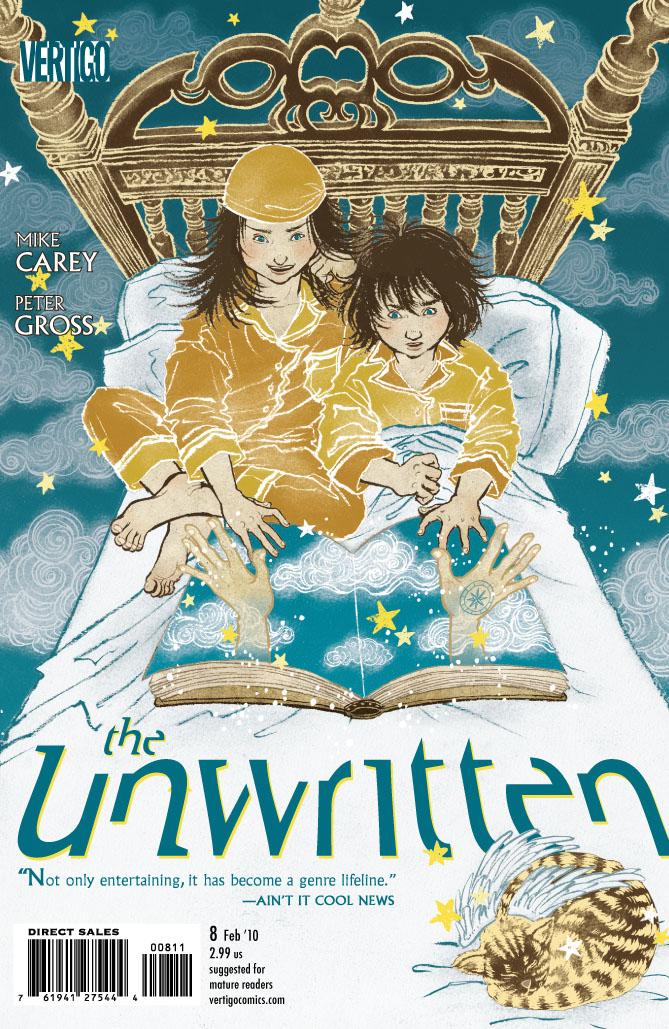 PG: We kind of hashed it out with mountains of emails back and forth, and then we decided to work with Pornsak (Pichetshote, Vertigo editor) who I had worked with on TESTAMENT; I had helped out on TESTAMENT, and he was good to work with. And Mike had worked with him on CROSSING MIDNIGHT. And we sat down and pitched to him, and it went kind of flat, our initial pitch to him. We got off the phone and we were like, “Ooh, that didn’t go so well.” I don’t think he got it…we were more enthusiastic about it than maybe we were able to communicate at that point. But he had a whole list of things like “You gotta convince me on this…” And we finally convinced him…I remember there was a point where he was like, “Oh, THAT’S what this is about. I really like it!” It took him a while to get there, and we really worked hard on this initial pitch document. Normally, these things take forever and ever, and finally Pornsak submitted it to Karen, and we were ready to step back and wait for 8 months to hear anything on it, but it was that same morning, Pornsak called back and said, “You’re not going to believe this, but Karen’s okayed the project!” And we were like “What?!” And then he called back 20 minutes later and said, “Well hold back though, Paul Levitz has to okay it too, that could be a while.” Then he called back 20 minutes after that, and was like “You’re not going to believe this! Paul Levitz approved the project!” So it was basically one afternoon, after 8 years of pitching things…
PG: We kind of hashed it out with mountains of emails back and forth, and then we decided to work with Pornsak (Pichetshote, Vertigo editor) who I had worked with on TESTAMENT; I had helped out on TESTAMENT, and he was good to work with. And Mike had worked with him on CROSSING MIDNIGHT. And we sat down and pitched to him, and it went kind of flat, our initial pitch to him. We got off the phone and we were like, “Ooh, that didn’t go so well.” I don’t think he got it…we were more enthusiastic about it than maybe we were able to communicate at that point. But he had a whole list of things like “You gotta convince me on this…” And we finally convinced him…I remember there was a point where he was like, “Oh, THAT’S what this is about. I really like it!” It took him a while to get there, and we really worked hard on this initial pitch document. Normally, these things take forever and ever, and finally Pornsak submitted it to Karen, and we were ready to step back and wait for 8 months to hear anything on it, but it was that same morning, Pornsak called back and said, “You’re not going to believe this, but Karen’s okayed the project!” And we were like “What?!” And then he called back 20 minutes later and said, “Well hold back though, Paul Levitz has to okay it too, that could be a while.” Then he called back 20 minutes after that, and was like “You’re not going to believe this! Paul Levitz approved the project!” So it was basically one afternoon, after 8 years of pitching things…MA: Is it difficult when you’re coming up with an idea like that to make sure there aren’t other ideas out there covering the same territory?
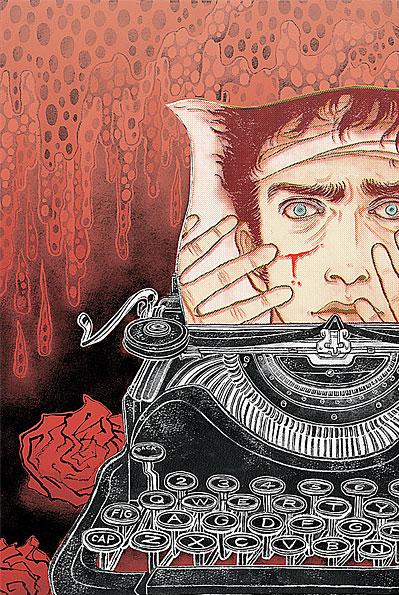 PG: Yeah, these days there’s SO much stuff out there, and a lot of times you’ll be halfway through a pitch and you’ll realize “oh my God”…someone will say “oh, that’s just like this” and it’ll be something you’ve never even heard of before. And I think that happens because people really work in “ideaspace”…
PG: Yeah, these days there’s SO much stuff out there, and a lot of times you’ll be halfway through a pitch and you’ll realize “oh my God”…someone will say “oh, that’s just like this” and it’ll be something you’ve never even heard of before. And I think that happens because people really work in “ideaspace”… MA: Something’s in the zeitgeist.
PG: Yeah, and it’s really true. But this has been such a simple concept in some ways, and we were like “God, someone must have done this before…” I was asking other writer friends, “Can you think of anything that’s just like this?” And they were like, “Oh, there must be” and then “No, no, there’s not.” So I think we’re safe so far, but that’s always…MA: So given like you said, that there’s so much stuff out there on the shelves, how do you make sure people notice what you’re doing here?
PG: Well, the big things we addressed were that we wanted it to have a lot of power coming right out of the gate; we wanted that first issue to be chock full of stuff and really put a lot of what it’s about into that. And then we realized this story is kind of like an onion; it’s got layers and layers and layers to it, and because of that we were able to put a lot of things on the table right away, because in the long run, they might not be THE big question of the series, or what it’s really about. So that really gave us an opportunity. I think a few years back, outing Tom as we did in the first issue, that might not have happened right away. We might have built all the questions as to whether he’s real or not.MA: But you wanted something explosive right out of the gate.
PG: Yeah, and we thought, “It’s a big question, but there’s other, bigger questions that come after it, so let’s just put it out there.” And time and again, throughout the series, one of us will say, “let’s do this now” even though we were going to do it later, and it worked.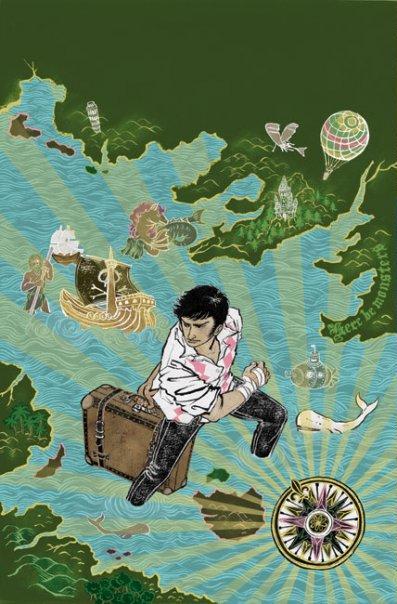
MA: It seems like the market is a lot different these days; it used to be that you could buy the first issue of a series and even if you weren’t entirely sure about it right from the first issue, you’d give it some time, and see what was going on. But now it’s just like, “You got one issue to hook me, and that’s it.”
PG: I think that’s totally true, and I think we went into it that way. And I think if there’s any kind of weakness in the first issue, I think you’re dead. People’s attention spans are so short, and there are so many other options for them, that if it’s not great off the bat…MA: And of course there’s also the issue of the rise in prices.
PG: Yeah, I think all that goes hand in hand. You know, I’ve seen books come out that I know are going to be good books, and they have kind of a weak first issue, and it’s just kind of sad, ‘cause you think, “That’s doomed. They blew their chance.” And especially nowadays, it’s very rare for a book to build…you know, something like CHEW, where the orders are going up, that’s such a rarity. Basically, you kind of know whatever you got with your first issue is probably going to be the height, except if the trade paperback market builds, which happens pretty well with the Vertigo books. And for us, it was like “Ok, we got a great first push” with that dollar issue and the reception to it, and then “Ok, now we want to make it good enough that people are going to keep reading it, instead of deciding to switch to trades on it.”MA: Now, let me ask you a little bit about the lead character, Tom Taylor. How does he differ from Tommy Taylor?
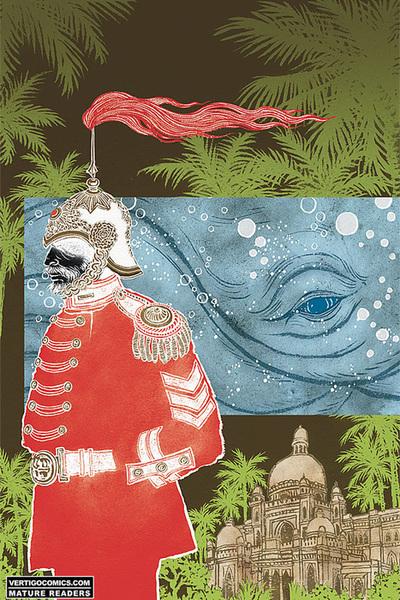 PG: I think it’s kind of like the flipside of innocence, childhood innocence and world-weary adulthood. There’ll be a lot of other things that come up, that are similarities or differences, but I think off the bat, Tom has been beaten down by disappointment his whole life; his father’s left him, and that’s a bitter pill to swallow; he doesn’t understand why. And really, everything he’s tried to do in his life has kind of spectacularly failed. And publicly failed. We had one little bit in the first issue that we weren’t really able to bring across, but it was the idea that Tom lost his virginity and it got taped on a cellphone video and circulated. So sometimes in the background you see these little X-rated Tommy bits. So everything in his life has been a humiliation.
PG: I think it’s kind of like the flipside of innocence, childhood innocence and world-weary adulthood. There’ll be a lot of other things that come up, that are similarities or differences, but I think off the bat, Tom has been beaten down by disappointment his whole life; his father’s left him, and that’s a bitter pill to swallow; he doesn’t understand why. And really, everything he’s tried to do in his life has kind of spectacularly failed. And publicly failed. We had one little bit in the first issue that we weren’t really able to bring across, but it was the idea that Tom lost his virginity and it got taped on a cellphone video and circulated. So sometimes in the background you see these little X-rated Tommy bits. So everything in his life has been a humiliation. MA: Is he really completely convinced that his father left of his own volition, and something bad didn’t happen to him?
PG: You know, I’m gonna be a little vague on that. (laughs) I think for our purposes, his bitterness has overwhelmed everything else we know that he knows about that. I think for him, his dad just left because he’s an ass.MA: Now, he seems to hate being associated with this character, but at the same time, he sort of embraces it and makes the most of it to his own benefit.
PG: Or it’s like he can’t get rid of it. I think that’s where the cynicism comes from for him.MA: So he’s cynical in your view?
PG: Well, I think he is at the start. I mean, he’s stuck with that life. And yet underneath it, for some reason…he’s stuck with it for some reason that’s his own doing.MA: Now in that first issue, we see him at a convention…is he sort of inspired by those celebrities that you see from decades past attending conventions, and that’s their only means of income these days?
 PG: Oh, totally, yeah. I’ve been going to conventions myself, and I run into those people, and I think, “Oh, that’s gotta be a horrible life.”
PG: Oh, totally, yeah. I’ve been going to conventions myself, and I run into those people, and I think, “Oh, that’s gotta be a horrible life.” MA: Yeah, I feel bad when I see them. I don’t know what to say.
PG: And for some of them, I think it’s not such a bad life. But…I don’t know. What a sad fate. I mean, what I like about it is just by putting him in that situation, you can bring so much of your own feelings about what that would be like into it, that it just rounds the character out.MA: I really liked that scene in the first issue where he’s answering fan questions, and someone asks him what it’s like to have everyone know him so well, and he starts to give an honest answer, which is that he’s not really Tommy, and then he looks out at the audience and realizes they don’t want the honest answer, so he just gives them what they want to hear. And that really hit me, because I’ve seen that at conventions, time and time again; you see somebody up at that panel, and you know that they’re not giving the honest answer, because they’re telling the person what they want to hear.
PG: Yeah, that was a poignant moment for him, I think. It’s funny, the first time we did a convention after that, Mike and I were in New York, and it was a totally different experience being up there and looking out at those people after having drawn that, it was a strange sort of déjà vu. Every time I’ve been at a con now since then, it’s kind of colored my thoughts about it.
MA: Have you ever had that kind of experience at convention, where somebody’s asking you kind of a strange question, and you just have to humor them?
PG: Oh yeah, totally. I mean, not so much at a big panel thing, but sitting at an artist’s table, lots of times. Especially, there’ve been a lot of people over the years that love to talk about the sex life of like, the characters in the BOOKS OF MAGIC; there were a lot of people who wanted to talk about Tim and Molly’s sex life. And it’s kind of like “O-kayyy…” (laughs)MA: I was at a convention earlier this year, and speaking of celebrities from decades past, they had Billy Dee Williams there. And this girl stands up, and she starts asking him this incredibly convoluted question about how his character from Star Wars represents a “Judas figure” and she’s making all these biblical references, and for a second I thought he was just going to totally blow her off, but he starts off by saying “I disagree with the premise that he’s a Judas figure,” and he actually tried to answer the question seriously.
PG: (laughs) That’s pretty funny. You’d think he’d be the least still emotionally involved in the whole thing.MA: Yeah, exactly. But no, he took it seriously.
PG: Yeah, I just…having to make a living off of something you did once a long time ago…MA: It’s gotta hurt a little.
PG: Oh God, yeah.MA: In terms of Tom, he’s been thrust into this situation by his father, and we don’t know his father’s motivations behind it, but just speaking in general; do you see parents who include their children in their work as bad parents? Like a few months ago, there was that “balloon boy” father who was trying to use his son to generate publicity for himself.
 PG: Oh yeah, I guess that is kind of a similar thing, isn’t it? Well, the whole genesis of it for me…I have a 9 year old daughter. And for me, the whole first concept of this, about the parent who would write this thing about their kid was based on that idea: “what if I wrote this story about my daughter?” ‘Cause I think at times, “Oh, I should turn her into a character in a book.” And then I thought that whole thing through, like, “why would I do that?” And what if the book was really successful? What if it was like Harry Potter? But it was specifically about my daughter. And I had this whole little story in my head that I never was gonna do, ‘cause I didn’t want to do it to her.
PG: Oh yeah, I guess that is kind of a similar thing, isn’t it? Well, the whole genesis of it for me…I have a 9 year old daughter. And for me, the whole first concept of this, about the parent who would write this thing about their kid was based on that idea: “what if I wrote this story about my daughter?” ‘Cause I think at times, “Oh, I should turn her into a character in a book.” And then I thought that whole thing through, like, “why would I do that?” And what if the book was really successful? What if it was like Harry Potter? But it was specifically about my daughter. And I had this whole little story in my head that I never was gonna do, ‘cause I didn’t want to do it to her. MA: I know in other interviews, you’ve mentioned Christopher Robin from the Winnie The Pooh books…
PG: Yeah, which Mike immediately jumped to. I hadn’t even made that connection at all. I wasn’t even thinking along those lines, and then Mike was like, “oh yeah, it’s like Christopher Robin Milne” and I was like “oh my God, it is!”MA: And I didn’t know till you guys started talking about it that he had really resented his father doing that, and I felt kind of bad reading that, because especially in that day and age--maybe now with the way the media is insane these days, you would know better—but in those days, his father probably just thought he was doing a nice thing, paying tribute to his son…
PG: Oh, totally…and you know the other character who’s kind of interesting is Dennis the Menace—that kid, Dennis Ketcham—
MA: Oh yeah, Hank Ketcham’s son.
PG: Yeah, he had a pretty miserable relationship with that character and his father.MA: So let me ask you, is the collaborative process on UNWRITTEN very different from what you did on LUCIFER?
PG: Yeah it is. It’s kind of like LUCIFER amped up ten times. ‘Cause with LUCIFER, I was always cognizant that it was Mike’s story, and I was there to deliver Mike’s story. Although one of my favorite things to do was to find a hole in the story or a hole in the plot; I used to really enjoy catching Mike with his pants down on something and writing to him and saying “oh look, this kind of doesn’t work, does it?” (laughs) And the beauty of that with Mike was he’d go “yeah, you’re right, I really fucked that up” but then he would incorporate his mistake into it or fix it, and make it ten times better. So the thing I learned about Mike was if you confront him, he gives you better stuff.MA: I guess some writers might get defensive.
PG: Oh totally. Some writers I would not even point it out, I would just try to fix it. But I realize with Mike, he likes the collaboration, or at least he likes it with me; I’m not going to encourage all of his artists to start finding flaws in his work! (laughs) And there were a couple of scenes in LUCIFER that were real powerful for both of us, where Mike would write something, and I would know that if I drew this the way it was written, it would be awful, ‘cause it wasn’t the stuff I did well. So I would take that scene, and I would just strip out all the descriptive writing he did and just leave the dialogue, and I would just redo the scene in a completely different way. And those ended up being my favorite scenes in the book, and they ended up being his favorite scenes in the book. It’s like I can bring a whole additional element that he’s never thought of into it, but it really brings out his story in exactly the way he would have wanted it. So we built that sense of possible collaboration. So then with UNWRITTEN, where it’s our story and we co-plot it basically, I have the freedom to do that all the time. So it really is a lot more fluid. And it’s interesting, because we stayed really true to what our idea is, but there’s so much new stuff that we’ve added in along the way. But it hasn’t changed the underlying structure; it’s been kind of an amazing process.
MA: I guess that style of collaboration is getting rarer these days; a lot of writers and artists don’t even directly communicate, they all communicate through the editor, right?
PG: Yeah, it is kind of rarer, and I don’t know why it works so well on this; I think maybe it’s because of that dangling promise of how good it can be when it works. And I think there’s just a lot of trust; I think Mike totally trusts me to rip apart the stuff and get to the guts of it, and I think that’s what’s really interesting about the process and what makes it really fun; I know this going to be an exciting, big period of creativity because of it.MA: How different is it than when you’re drawing your own writing, like with BOOKS OF MAGIC?
PG: It’s a lot different than that, and this gets back to what I was talking about with collaboration vs. one creator’s vision. It’s like, I could try to do that same thing with my own stuff, but I’m still only bringing my own stuff to the plate. So it’s really just variations on a theme. Whereas Mike brings something to the plate that I’ll never have been able to think of. So that gets me off thinking in a whole different direction that I could never get to on my own. And I think my strength…you know, I’m not like this fan-favorite artist; I look at other people’s stuff and I can see “oh, they do this way better than me” but I think the thing I do really well is I’m really able to get at the guts of the story and what a writer’s intention is, and find more in it than they might have had coming into it.MA: I notice that most of your series have in some way involved the supernatural; are you particularly attracted to that?
 PG: No, not at all! That’s kind of the interesting thing for me, is that I’m really not supernatural-motivated. I think I’m pretty down-to-earth with my stuff. And I think maybe what I do well is I give kind of a commonality to that sort of thing, like I can really ground it in earthiness. So I think the more cosmicky, off-the-wall kind of thing you give me, the more accessible I can make it.
PG: No, not at all! That’s kind of the interesting thing for me, is that I’m really not supernatural-motivated. I think I’m pretty down-to-earth with my stuff. And I think maybe what I do well is I give kind of a commonality to that sort of thing, like I can really ground it in earthiness. So I think the more cosmicky, off-the-wall kind of thing you give me, the more accessible I can make it. MA: What kinds of stuff do you prefer not to draw?
PG: I have some people that work in the studio helping with backgrounds and stuff. I hate drawing guns; not from any philosophical point of view, I’m just no good at it. And I’m not into drawing cars, and I hate scenes that take place in cars. So I tend to let the other people…like, I’ll draw a little box and I’ll say “Put a car in there for me.”MA: Is it stuff with mechanical detail?
PG: No, some of that stuff I like drawing, but it’s specifically cars and guns for some reason do nothing for me. I like the things that people build in the world; I like environments, but maybe slightly more organic.MA: So any hints about what’s coming up in the book?
PG: We’ve got—Mike might’ve mentioned this too—issue #9 concludes the “Inside Man” arc, and after that, Tom and Savoy and Lizzie kind of take a side-trip into 1930s Stuttgart; Nazi Germany. That’s two issues.MA: Are they actually going back in time to 1930s Stuttgart, or are they going to a “version” of it?
PG: It’s a fictionalized version of it is all I can say. With some hard truths at the core of it.MA: I know a few months ago you joined Mike’s website; what was the reasoning behind that?
 PG: I had a website just for selling my pages, but it didn’t have blog content or anything like that on there. And we wanted to build up kind of a community place or gathering place for people when they start reading THE UNWRITTEN, so we decided to combine two sites into one, at MikeAndPeter.com. But we’ve been pretty bad about updating it. (laughs) We’ve been so phenomenally busy with this book. So we’re struggling to be blogging on there and build up some content.
PG: I had a website just for selling my pages, but it didn’t have blog content or anything like that on there. And we wanted to build up kind of a community place or gathering place for people when they start reading THE UNWRITTEN, so we decided to combine two sites into one, at MikeAndPeter.com. But we’ve been pretty bad about updating it. (laughs) We’ve been so phenomenally busy with this book. So we’re struggling to be blogging on there and build up some content. MA: Obviously working on this book has got to take up an enormous amount of your time, but do you do any other little things on the side?
PG: I have a couple of other projects, kind of “heritage” projects from before; like I’m still waiting on Mark Millar; he’s supposed to be doing a sequel to CHOSEN, which is AMERICAN JESUS now.MA: Are you involved at all with the development of that for the movies?
PG: Yeah, a little bit. Not as involved as Mark is. But it’s moving along. You know what it’s like. Many things look like they’re happening, and then they aren’t happening. I just stay completely out of any kind of hopefulness on that front. I have another project at Dark Horse with Andy Breckman who’s the guy who created the TV show “Monk”. And I’m struggling to find time to work on that unfortunately. I’ve been really swamped on THE UNWRITTEN, getting that done every month.But it’s been going really well. It’s been a total thrill to work on, and it’s been really fun because I think people are kind of getting…I mean, it’s been really interesting because we do it thinking “Ok, here’s what we want people to come away with” and they’re coming away with that so far. That’s been kind of a thrill. I don’t know if it’s because we know what we’re doing, finally, after so many years. (laughs) Or if it’s just the right story at the right time, I don’t know.

MA: It’s nice when people “get” what you’re trying to do.
PG: Yeah, and that doesn’t always happen. A lot of times you find if you put any kind of extraneous thing in there, they go there and they come up with their own story and you don’t have them under your control anymore. But for as vague as the story is…I’ve seen people comparing to “Lost” in the sense that we’ll answer a little question and dangle ten more, and never really answer any of these big questions. Which is not especially the way we were thinking about it, but I think it’s kind of a good way of looking at it. We’ve really enjoyed that response.MA: Keeps ‘em coming back for more.
PG: Yeah. I mean, for you reading it, what would you say it’s like?MA: You know what, it’s not what I thought it would be about, but I like it anyway, you know what I mean? Like I read the first issue, and I thought, “Ok, this is going to be a fairly grounded story.” And it’s getting weirder. But I like that. That’s good.
PG: Yeah, and I think like I said, we went into that knowing it was gonna kind of evolve in the reader’s eyes as we went, but hoping that it’s gonna be an interesting enough evolution that they’re gonna stay along with us for the ride.MA: That conversation with Frankenstein was definitely a highlight for me.
PG: Yeah, well, there’s gonna be a lot more of that sort of stuff. (laughs) And it’s funny for us, because we know exactly where all this stuff is going more or less. So for us working on it, it’s not that kind of vague, unanswerable sort of thing. We’re always like “Oh, does that answer too much?” I empathize with the guys working on “Lost” now, ‘cause it’s like, if you have answers to those questions in your head, it’s really hard to gauge how much you’re dangling, and how much you’re infuriating the readers.MA: And God knows how many of those answers changed as the writers changed.
PG: Well that’s just it, I mean with “Lost”, you get the feeling like they didn’t have any idea where it was going necessarily. But we’ve seen a few reviews on this that we’ve passed around, where it’s like “Oh, it’s very clear these guy have no idea where this is going.” (laughs)
MA: No, that I didn’t feel like. I feel like you know where you’re going, I just feel like you’re very good at hiding from us where you’re going.
PG: Yeah, but I think the one thing we’ve come up with is that we feel like every issue has to have at least one big payoff, or one big step, or something you learn. You gotta feel like “Oh, at least I got that out of it.”MA: I noticed that. Even the Rudyard Kipling issue, which was more of an introspective issue in some ways, it ends with Tom’s father discovering his journal.
PG: And I think that’s when we realized that’s what we have to do, give a big payoff. Because Mike used to do those one-offs for LUCIFER that were so beautiful, but they didn’t always have that immediate payoff kind of thing. And the only reason we have that in issue #5, that scene with Wilson, is because Mike wrote that issue for a different artist; that was going to be the fill-in issue that let me get back on schedule. And the artist who was going to do it dropped out at the last minute; we’re not even sure why he dropped out. So I ended up drawing it. But originally, when I read that script when someone else was going to draw it, I was like “Mike, that is the best script I have ever read for a single issue. This thing is going to win an Eisner and I want a part of it. Put in a page for me to draw so I’m part of the issue.” (laughs) So he wrote that last page just to have me draw it, but it ended up with that twist that really made the whole issue have immediate meaning in the context of the overall story. And I think that was like a real breakthrough for us, because we realized we can do that with every other issue we have planned, so you at least get a step in the overall story each time.MA: Yeah, that’s why I don’t feel you guys don’t know where you’re going, because you’re giving us bits and pieces, you’re giving us something substantive, but you’re not giving us so much that it gives it all away.
PG: Have you read issue #8?MA: Yeah, I have.
PG: I think that one was kind of nice because of the structure of that, stepping back into the story and telling it from a different point of view, but then on the last page, it came right back around to where we were at the end of the previous issue…
MA: I totally thought that was going to be a one-off issue. I thought, “Ok, they’re giving us a little perspective from this character who we know is already dead, and blah blah blah.” And then all of a sudden the kids get involved, and I was like “Ahhh, ok.”
PG: Yeah, I thought it worked out really interesting that way. And that was the payoff for that issue. But to me, that was a really interesting way that he told that story and how it’s going to play out in the next issue. But you look back and say, “Well you know, I don’t think he could have told it any other way.” I’ll be curious after you read the next issue, how people view that interlude issue.MA: What’s the latest issue that you’ve seen the script for?
PG: Um…#13.MA: So you’re way ahead.
PG: Well, #10 and #11 we have another artist doing finishes…MA: Are you allowed to say who?
PG: Jimmy Broxton is his “pen name”. (laughs)MA: So it’s somebody that we know who doesn’t want to…
PG: Well, he’s kind of structuring his work in different ways…MA: Oh I see, so he wants to give people a fresh impression.
PG: Yeah, yeah. And then issue #12 is another one-off like #5 but it’s kind of Beatrix Potter-based; not specifically Beatrix Potter, but those sort of characters, talking animals.
MA: You know, just thinking, but you ought to suggest to Jimmy, especially if there’s a positive reaction to the issues and it’s getting all this acclaim, he should just go, “Haha! It’s me!” Just unmask to everyone and blow their minds.
PG: Well, it’s weird, because I found out about the pen name thing later, so I don’t even think of it ever. So I should check with him and say “Do you only want us to use this Jimmy Broxton name?” (laughs) So yeah, Jimmy Broxton’s doing finishes, and we’re pretty excited about that. He does wonderful Nazis. So I was kind of jumping ahead, working with other artists for a couple of issues; it gets us on schedule and gives us a different look for a couple of issues.MA: So every few issues, you’ll have someone to help you catch up?
PG: Yeah, like #16 is going to be kind of a special issue, that we’re hoping to bring Ryan Kelly back in to do inks on it with me like we did on LUCIFER.MA: Very cool.
In most places, Matt Adler goes by the name his mother gave him, but occasionally uses the handle "CylverSaber", based on a character he created for the old DARK FORCES II: JEDI KNIGHT game (one hint of his overweening nerddom). He currently does IT and networking support for the government of Nassau County, NY, but his dream is to write for a living, and is in the process of figuring out how to get publishers to give his stuff a look. In the meantime, he passes the time by writing for AICN, CBR, and a few other places. He has also written for MARVEL SPOTLIGHT magazine.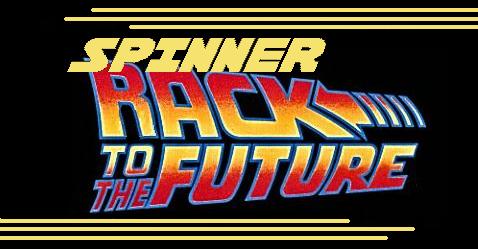
Now check out these previews for your clickable pleasure filled with the stuff we proudly call @$$y goodness!
First Look at WWE HEROES #2 Writer: Keith Champagne Art: Andy Smith Publisher: Titan Books In stores April 27th, 2010!
28 DAYS LATER #6 Written by Michael Alan Nelson Drawn by Declan Shalvey Publisher: BOOM! Studios In stores this week!
BERSERKER #4 Writer: Rick Loverd Art: Jeremy Haun Publisher: Top Cow In stores this week!
SO SUPER DUPER #9 Writer: Brian Andersen Art: Celina Hernandez More info at sosuperduper.com Available Mid-February in cooler comic shops!
LEGENDS: THE ENCHANTED #0 By Nick Percival Publisher: Radical Comics In stores this week!
WIZARDS OF MICKEY #1 Writen by Stefano Ambrosio Drawn by Alessandro & Lorenzo Pastrovicchio Publisher: BOOM! Studios In stores this week!
THE WAKING #1 Writer: Raven Gregory Art: Vic Drujiniu Publisher: Zenescope Entertainment In stores this week!
TOY STORY #1 (ONGOING) Written by Jesse Blaze Snider Drawn by Nathan Watson Publisher: BOOM! Studios In stores this week!


